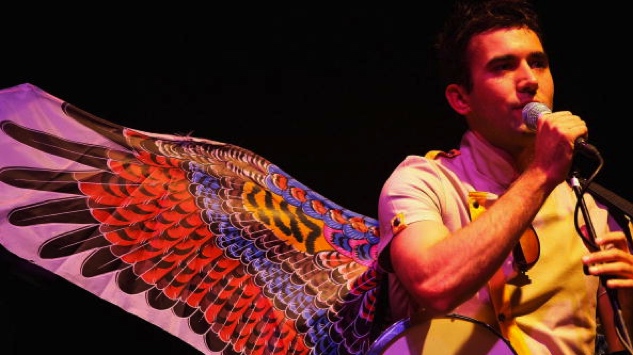
Musically, we’re looking at that glorious amalgamation of tradition folk elements (acoustic instruments and vocal styles) with the burgeoning indie-rock scene—or, occasionally, electronic elements applied to folk music. These albums are filled with folky songs that would be at home on college radio next to post-rock and dance tracks. There’s overlap with alt-country, coffeehouse singer/songwriters, orchestral pop and indie rock, but we did our best to grab albums that felt like “indie folk,” whether the artist was recorded in their bedroom or released it on a major label. There was plenty of argument among our staff about who was too hard-rock, too straight alt-country or just didn’t fit our definitions. But these are the albums our music writers and editors felt were the very best indie-folk albums ever made. If you’d like to chime in with your own opinion on what makes an album “indie folk” or what albums we missed, visit our Facebook page.
We limited our list to two albums per artist, and even then only noting second albums from a handful of key artists.
Here are the 100 Best Indie Folk Albums of All Time.
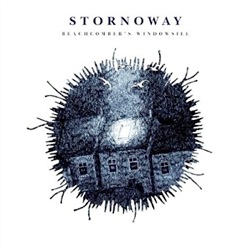 100. Stornoway – Beachcomber’s Windowsill (2010)
100. Stornoway – Beachcomber’s Windowsill (2010)
With bouncy bass lines and bright vocals, British chamber-pop quartet Stornoway recalls all the best qualities of ‘90s 120 Minutes darlings The Ocean Blue with a chamber-pop/indie-folk twist. The 11 tracks, while not always overflowing with joy, convey a sort of contentment that you’d expect from four friends enjoying a new chapter of life that involves playing music for a living. Employing cello, horns, organ and banjo, songs like “Zorbing” and “I Saw You Blink” beg for the repeat button. —Josh Jackson
 99. Beirut – No No No (2015)
99. Beirut – No No No (2015)
Beirut may have begun as the solo project of singer/songwriter Zach Condon, but the musical globetrotter credits the rest of his now-five-piece band for helping turn the fragments he’d written during the tumultuous period after 2011’s The Rip Tide into a cohesive album. Few bands operate in musical territory all their own, but the way horns weave through these tender ballads remains unique and gives the music a distinct bittersweetness as teasingly joyous melodies belie Condon’s snippets of loneliness and heartache. Every time a song like “Perth” offers a cheery groove, Condon undercuts it with lyrics like “You saw me at my worst / Ragged tires burning for miles / I ran until it hurt.” Condon lost love and then found it while making this record, but rather than write songs about either, he managed to infuse every song on the record with bits of both, a beautiful jumble of emotions that hits you all at once. —Josh Jackson
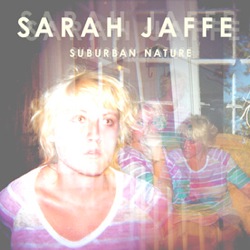 98. Sarah Jaffe – Suburban Nature (2008)
98. Sarah Jaffe – Suburban Nature (2008)
Sarah Jaffe is a lot like her home state of Texas. Wide-open, humble and matter-of-fact, she crafts beautiful, raw songs that “are what they are” in the very best way. Playing like a wise, witty diary entry marked with teardrops, growing pains and effusive honesty, her debut album, Suburban Nature, ebbs and flows on a sea of candid relationship narratives. “Love is interesting, because when two people come together that way, it can be really hostile and beautiful at the same time,” she said of the inspiration for the album’s 13 songs, some of which were written before Jaffe graduated from high school. —Melanie Gomez
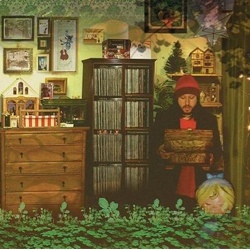 97. Badly Drawn Boy – One Plus One Is One (2004)
97. Badly Drawn Boy – One Plus One Is One (2004)
The poorly illustrated Damon Gaugh had already proven himself a masterful arranger, deftly weaving vignettes, tangents, instrumental interludes and miniature movements into the space of three- to five-minute pop songs. His fourth release—a much sparer, acoustic creation—is no less carefully arranged. Nearly all of the 16 songs on One Plus One Is One feature ADD-accomodating instrumental and dynamic shifts. Children’s choirs, café chatter, hand claps, ticking clocks and ambient noise liven the mix and dispel the feeling of gimmickry. The instrumentation is remarkably subtle, especially the muted banjo running through “Logic of a Friend,” and the soft accordion buried in the Yankee Hotel Foxtrot-ish outro of the album’s closer, “Holy Grail.” For a collection of heartfelt, affirming and coolly optimistic songs, the intricate production is careful enough to propel the music along, rather than bog it down in a mire of overzealous meddling. —Josh Jackson
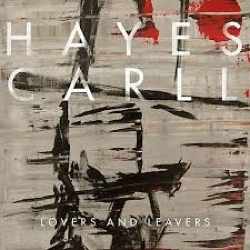 96. Hayes Carll – Lovers and Leavers (2016)
96. Hayes Carll – Lovers and Leavers (2016)
Lovers and Leavers is the finest work of Hayes Carll’s career, even if it’s very different from what came before. It’s a quieter album, recorded mostly with a stripped-down trio—with occasional splashes of keys and steel added here and there. It’s a more thoughtful collection—with the choruses more likely to contain epiphanies than punchlines. Into the spaces where the stomping and joking once were comes a sobering awareness of the losses that shadow every life. That consciousness was always lurking in the background of Carll’s songs, but here it comes into the foreground. On “Sake of the Song,” over an organ-fueled Memphis blues, he sings: “Hitchhiking, bus riding, rental cars, living rooms, coffee houses, run-down bars, 10,000 people or alone under the stars, it’s all for the sake of the song.” As the number sprawls across a dozen verses, Carll tallies up all the pluses and minuses of the music life—the “record deals and trained seals” and the chance to “tell your truth however you choose”—but refuses to conclude that one outweighs the other. Instead he presents the listener—as he does on all the album’s songs—with the unsatisfying reality that life is a package deal, a series of tradeoffs, and leaves us to draw our own conclusions. —Geoffrey Himes
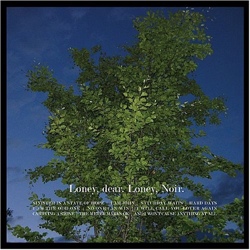 95. Loney, dear – Loney, Noir (2007)
95. Loney, dear – Loney, Noir (2007)
While some musicians spend thousands of dollars on fancy recording studios and renowned producers, Sweden’s Emil Svanängen—aka Loney, Dear—holes up in his parents’ basement with a computer, a pile of instruments and a stack of CD-Rs. And while some may label his baklava-layered masterwork as a cold fusion of Belle & Sebastian and Kelley Stultz with a side of Swedish meatball, this is selling his joyous confessional short “I Am John” is basement-pop perfection. Somewhere far, far away, Brain Wilson’s muse and Barry Gibb’s voice coach are jealous. If I had had this track in my eight-track arsenal during my first co-ed slumber party, I would have been much luckier. If only sucking helium could make me sound that good. “I am John” was the close-eyes-shake-head-and-smile song of 2007. —Jay Sweet
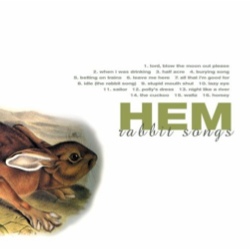 94. Hem – Rabbit Songs (2002)
94. Hem – Rabbit Songs (2002)
In a musical landscape populated by artists arming themselves with irony and attitude, Hem’s nakedly honest approach stands out. Rabbit Songs, the band’s first effort, made many critics’ best-of-2002 lists, including Paste’s. Evidence of how Hem’s music connects so deeply with listeners can be found in a personal story—that of my first child’s birth. Before heading to the hospital, my wife and I had the presence of mind to gather up a few much-loved CDs for the nerve-wracking hours ahead; one of them was Rabbit Songs. Dan Messé’s lyrics—delivered by Sally Ellyson’s dulcet voice and backed by richly intricate arrangements—mine deep veins of heartrending poignancy. Hem’s songs provoke feelings associated with a father telling his son to be brave; with committed lovers sharing an embrace in the darkest hours of the night; with a new child arriving the same day one receives news of a parent’s passing—or in our case, with the appearance of our firstborn. —Reid Davis
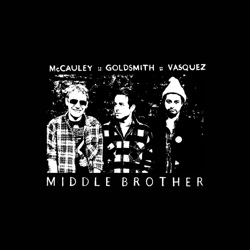 93. Middle Brother – Middle Brother (2011)
93. Middle Brother – Middle Brother (2011)
Very rarely does a supergroup manage to come up with something as good as the sum of its parts. Just like a movie starring a crowd of A-listers doesn’t necessarily equal anything Oscar-worthy (we’re looking at you, Ocean’s 12), it isn’t a given that a band with three frontmen will be able to effectively pool its talents. But the men of Middle Brother sound as if they’ve been playing together for years. John McCauley (Deer Tick), Matt Vasquez (Delta Spirit) and Taylor Goldsmith (Dawes) take turns singing lead, and from the first harmonies on “Daydreaming” it’s clear that we’ve got a true collaboration on our hands. At times they sound so in tune with one another that Middle Brother starts to feel like a concept album, like a time capsule crafted by the trio of rock troubadours to document their rise to fame. We get the sense that in addition to their shared influences, the members of Middle Brother have plenty of common experiences in their pasts. —Bonnie Stiernberg
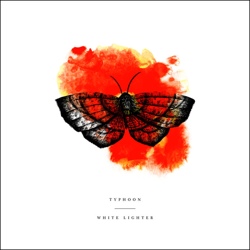 92. Typhoon – White Lighter (2013)
92. Typhoon – White Lighter (2013)
Recorded on the sprawling Pendarvis Farm, about 30 minutes outside the band’s hometown, White Lighter takes the utopian aesthetic of its locale and translates it into music. The band’s comparatively enormous size—marked by a horn section, string section and eclectic percussion—naturally exudes a boisterous optimism and familial charm. However, that positive sound also seems to mask the album’s dystopian themes. Death is all over White Lighter, and it’s that combination that makes White Lighter so entrancing, serving as both a warning and a celebration of mortality. —Hilary Saunders
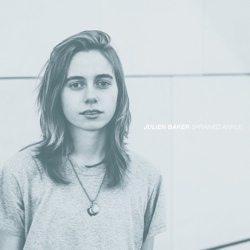 91. Julien Baker – Sprained Ankle (2015)
91. Julien Baker – Sprained Ankle (2015)
She may be uncomfortable talking about her substance abuse, a near-death experience and failed relationships, but Memphis singer-songwriter Julien Baker uses her music as a safe space to examine her past. Baker’s skill lies in her narrative songwriting, which pierces her experiences to the bone. Now, sober, having quit even cigarettes, Baker works out her troubles on Sprained Ankle, a collection of beautifully arranged folk songs using mostly her voice, a guitar and reverb. After playing in a post-rock band in high school, she began to rein in her demons and write on her own. Out came lyrics about wrapping a car around a streetlamp, having more whiskey than blood in her veins, time spent in ambulances, of an unbearable break-up with her girlfriend, and facing mortality. These songs were more personal than her earlier efforts, and rather than take a poetic look at her misgivings, Baker is brutally honest about the ugliness she faced. Her lyrical battles are not only with herself, but also with God, like Jacob wrestling the angel. —Roman Gokhman
 90. Palehound – Dry Food (2015)
90. Palehound – Dry Food (2015)
Ellen Kempner’s guitar prowess is Palehound’s staff of light, a six-stringed burning ember that guides you through her fractured song structures and doleful take on coming-of-age. That’s the basis of Dry Food, an eight-song exploration of Kempner’s mental inner space during the period of 2013 and ‘14. Complex dynamics keep the tracks from blending together into a giant collage, like the colorful travel-magazine cutouts that make up the cover art. The only constants are Kempner’s guitar and whispering vocals, which draw you into her dark world on tracks like “Molly,” where her counter-melody guitar riff gets attacked by fuzzed-out power chords. Kempner’s soft vocals puncture the heart with earnestness on tracks like “Dry Food” and create distance with the reverb-soaked “Cinnamon,” where her voice interweaves masterfully with gently strummed chords. Dry Food bleeds with emotional truth through a thorny lineage to Kurt Cobain-esque dissociation and mental anguish—which is why it was written in isolation, with Kempner playing all the parts except for drums. Dry Food seems possessed by the ghost of Elliott Smith—there are painful reminders all over this record of what it feels like to be tortured, lonely, abused and directionless—which can be exhausting through eight sugar-free songs. Most of Kempner’s lyrics aren’t easy to decipher, either, but combined with nuanced minor key changes, and juxtaposed with her childlike falsetto, they remind you of the dark-twinkle in the eyes of Sylvia Plath, where nothing is as it seems—like daydreaming over magazine cutouts of paradise, beyond reach. —Art Tavana
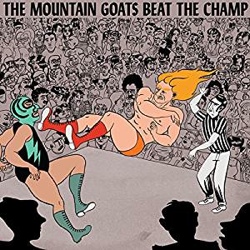 89. The Mountain Goats – Beat the Champ (2015)
89. The Mountain Goats – Beat the Champ (2015)
John Darnielle—the songwriter, singer, bandleader and driving force of The Mountain Goats—has a number of somewhat surprising passions. One is death metal, to which he’s paid homage in several songs, notably the classic “The Best Ever Death Metal Band Out of Denton.” Another is pro wrestling, and it’s into this arena that he introduced his record, Beat the Champ. That’s right, every single song here is about pro wrestling (albeit usually of the decidedly minor-league variety). As could be expected, Darnielle approaches the subject with uncommon sensitivity and insight, gifting some of his most tender moments of recognition to the perpetual villains of the melodrama (“Throw my better self overboard / Shoot at him when he comes up for air”). But in an album full of rip-your-heart out moments, Darnielle saves the most powder for his ode to a real-life childhood hero of his, Chavo Guerrero. Anyone familiar with Darnielle’s childhood (or too many of our own) can’t help but thrill to the sounds of “I need justice in my life, and here it comes / Look high / It’s my last hope / Chavo Guerrero / Coming off the top rope.” Fly high, Chavo. —Michael Dunaway
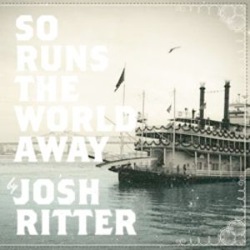 88. Josh Ritter – So Runs the World Away (2010)
88. Josh Ritter – So Runs the World Away (2010)
Idaho native and Brooklyn transplant Josh Ritter hit a beautiful stride on his sixth album, a soulful combination of conversational folk ballads and powerful gut punches. Ritter’s the kind of artist who will always draw comparisons to legends like Bob Dylan and contemporaries like Ryan Adams—and while So Runs the World Away contains a handful of songs that make those comparisons easy, it also never sways from his unmistakable cadence. He whispers on “The Curse,” stomps on “The Remnant” and, yes, matter-of-factly evokes Dylan on “Folk Bloodbath” when he explains with scratchy sincerity, “That’s the sad thing with life / There’s people always leavin’ just as other folks arrive.” He’s not the only one channeling the greats, but he does it better than almost anyone else. —Jenna Woginrich
 87. Feist – Let It Die (2004)
87. Feist – Let It Die (2004)
Feist made her entry into the much-ballyhooed Canadian Invasion of the ‘00s with this cozy and concertedly atmospheric major-label debut (the album was originally released in 2004 on Arts & Crafts). Tapping a fertile market with her pseudo-jazzy spare/lavish stylings, the album exposed a genuine talent to the wider herds. In the end, it’s the little touches that make Let It Die stand out from the Nic Harcourt-approved female-crooner clutter—the kiss of nylon guitar strings on “Mushaboom,” the deftly doubled vocals on “One Evening” and the cute finger snaps and koto twang on the aptly titled “Leisure Suite.” In a genre where it’s hard to escape producing mere sonic wallpaper, Feist generated a dazzling interior constellation for your candlelit, post-midnight ceiling-gazing needs. —Jeff Leven
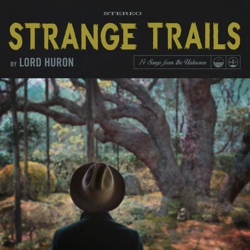 86. Lord Huron – Strange Trails (2015)
86. Lord Huron – Strange Trails (2015)
Lord Huron’s gorgeous sophomore effort, Strange Trails, came out in 2015, but its lush, woodsy melodies and genteel vocal harmonies make it sound like an artifact from the mid-’00s Fleet Foxes/Band of Horses/M. Ward indie-folk boom. Leaving aside any release-date cognitive dissonance, Strange Trails is a pleasure from beginning to end, with Ben Schneider’s reedy voice leading cuts both dreamy slow (opener “Love Like Ghosts”) and dance-party fast (the hand-clapped “Fool for Love”). Even Netflix teen drama 13 Reasons Why caught on, with its music supervisor soundtracking an emotionally pivotal scene to the album’s haunting closer, “The Night We Met.” The aforementioned “Fool for Love” also closed out the episode with Marnie’s (ultimately doomed) wedding on GIRLS. It makes sense that music supervisors keep retreading Lord Huron’s Strange Trails. Any romantic could accept it as the soundtrack of their lives. —Rachel Brodsky
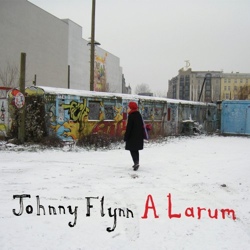 85. Johnny Flynn and The Sussex Wit – A Larum (2008)
85. Johnny Flynn and The Sussex Wit – A Larum (2008)
English boarding-school alum, former choirboy, and erstwhile Royal Shakespeare Company actor Johnny Flynn goes slumming on his debut album, adopting a Dickensian ragamuffin persona that is so engaging that you quickly forget that he’s never gone dumpster diving in his life. There are echoes of Trad stalwarts throughout—Martin Carthy and Mike Waterson in the singing, Bert Jansch in the supple guitar work—but Flynn is no retro iconoclast, and his biting social commentary owes more to Billy Bragg than Billy Billington. The Sussex Wit, Flynn’s backing band, unleashes a frenzied Pogues approximation behind him. Alarum (a Shakespearian term for general mayhem) is a fitting title for an impressive debut. —Andy Whitman
 84. Angel Olsen – Burn Your Fire for No Witness (2016)
84. Angel Olsen – Burn Your Fire for No Witness (2016)
Angel Olsen’s beautiful, sad and, ultimately, useful sophomore album, Burn Your Fire for No Witness is an experience obsessed with heartbreak, and engaging the record with a heavy heart of your own is excruciating—near-torture. But this is how Angel Olsen deserves to be absorbed, with empathy—knowing her pain and resolve and bravery, and using it for your own strength. It’s an album that tells the world we are not alone. It’s like Olsen was reading the language of heartbeats and sighed breaths and watery eyes. Closing number “Windows” asks “Won’t you open a window sometime? What’s so wrong with the light? Wind in your hair, sun in your eyes.” She so wants to love and to be loved that it’s as plain and simple as an open window and the sun shining in, and it confuses and torments her that her object of desire doesn’t see the world the same way. It’s the tragedy of any love that doesn’t work, and Olsen seems so willing to give that your heart can’t help but break for her. Her dry, almost rusty voice is pain made audible, like this isn’t her first heartbreak, like she’s endured lifetime after lifetime of them. Olsen shares graciously in her music, and if you are willing, Burn a Fire for No Witness will change your world—or, rather, it will change how you see your world. —Philip Cosores
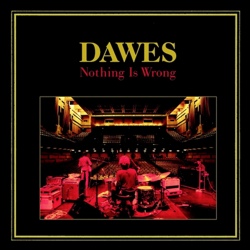 83. Dawes – Nothing Is Wrong (2011)
83. Dawes – Nothing Is Wrong (2011)
Two years after releasing their debut, North Hills, the men of Dawes hit the road for a long tour. Forced to write in the free time they were afforded, the songs on Nothing Is Wrong are marked by the qualities of a band in motion. “These days my friends don’t seem to know me / Without my suitcase in my hand,” Taylor Goldsmith sings in the opening track, “Time Spent in Los Angeles.” But despite the uncertainty and bouts of solitude that often come with life on the road, Goldsmith seems to find freedom in his travels. “Maybe cause I come from such an empty-hearted town / Or maybe cause some love of mine had really let me down,” he says on “If I Wanted Someone.” “But the only time I am lonely is when others are around / I just never end up knowing what to say.” Musically, on the other hand, there’s no worry that Dawes has lost its way. The songwriting and emotion are just as impressive on Nothing is Wrong as they were on North Hills. The influence of the North Hills and Laurel Canyon music scenes are still present as well, right down to Jackson Browne’s supporting vocals on “Fire Away.” Two years of fine-tuning their live sound made all the members of Dawes master musicians not only individually, but as a collective. Alex Casnoff’s work on the keys shines on nearly every track; Wylie Gelber maybe one of the most tasteful bassists ever, and young Griffin Goldsmith’s percussion is rock steady and incredibly impressive. But it is the sum of all these parts that makes Nothing is Wrong something truly special. —Wyndham Wyath
 82. Thao and the Get Down Stay Down – A Man Alive (2016)
82. Thao and the Get Down Stay Down – A Man Alive (2016)
Gone are the John Congleton-produced horn arrangements and blues piano of Thao & The Get Down Stay Down’s excellent previous release, We The Common. In their place is tUnE-yArDs’ Merrill Garbus’ electronic organica, which elevates Thao Nguyen’s most deeply introspective, experimental and well-formed release. A Man Alive is a dissection of Thao’s relationship with the father who left her family when she was young. Under Garbus’s guidance, there’s a newfound energy here—the tribal drum-laden and arresting vocal layers of “Meticulous Bird” and “Fool Forever” aren’t a far cry from tuNe-yArDs’ output. They serve to allow Thao to breathe and flex before embarking on a number of knee-buckling lyrical trips. When the mish-mash of Garbus and Thao’s sounds fuse, it can break you to pieces in the most powerful ways possible. —Adrian Spinelli
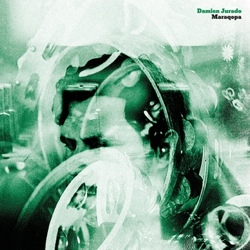 81. Damien Jurado – Maraqopa (2012)
81. Damien Jurado – Maraqopa (2012)
Damien Jurado wasn’t kidding when he told fans that this release was going to be unlike anything they’d heard from him before. Fifteen years and 10 albums into his career, the Seattle singer-songwriter found his ideal collaborator in producer Richard Swift, who worked with Jurado on 2010’s excellent Saint Bartlett. Where once there was stripped down folk, country and pop rock, Swift helped Jurado flesh out his sound with breezy bossa nova (“This Time Next Year”), a spooky children’s choir (“Life Away From the Garden”) and some ‘70s organ work (“So On, Nevada”). Jurado’s buttery voice, acoustic guitar and world-weary dissatisfaction remain at the center, supplemented by everything from seriously funky shredding on “Nothing Is the News” to seasick Spector psych on “Reel to Reel.” Maraqopa’s experimentations aren’t those of a young musician set loose in a studio full of new toys. Jurado was just hitting his stride. —Rachel Bailey
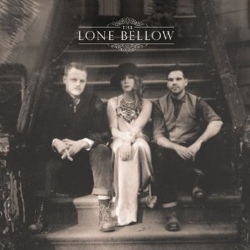 80. The Lone Bellow – The Lone Bellow (2013)
80. The Lone Bellow – The Lone Bellow (2013)
It’s hard to believe music rooted in tragedy can sweep listeners along with such potent exuberance, but Brooklyn’s The Lone Bellow creates a sweeping country rock that uses the three-part power harmonies of lead singer/writer Zach Williams, guitarist Brian Elmquist and mandolin player Kanene Pipkin to set Williams’s songs ablaze in emotion, passion and the moments when life is at its most extreme. Working with producer Charlie Peacock, The Lone Bellow figured out a way to harness the acoustic-rock template mined by Mumford & Sons, The Lumineers and The Civil Wars, and add a sense of powerful vocal incandescence. If Fleetwood Mac shimmered more, rocked less and were organic without being raw, that might suggest the level of evocative language and romance The Lone Bellow exudes. —Holly Gleason
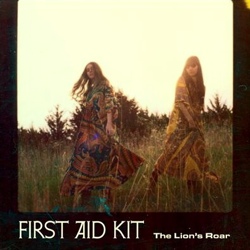 79. First Aid Kit – The Lion’s Roar (2012)
79. First Aid Kit – The Lion’s Roar (2012)
Much in the same way the timbre of Swedish sisters Johanna and Klara Söderbergmakes’ voices make them seem older than their years, the songs on The Lions’s Roar seem to be born out of lives lived much longer than their own. How have these young women had the sorts of life experiences to write the stories they do? Their songs are filled with wisdom gained from memories that seem to stretch back a thousand years or more. These are the words of truly old souls. The Lion’s Roar continues much in the same fashion as the folk duo’s first record, but the material here feels a lot bigger, thanks largely to the use of a full band featuring the sisters’ father as well as producer Mike Mogis and Nate Walcott of Bright Eyes. First Aid Kit have never been shy about their American influences, and their affinity for American folk and country music is clear on “Emmylou,” a beautiful track featuring swells of pedal-steel and light taps of wire brushes on the drums. The song is of course named for Emmylou Harris, and brims with the joy and artistry that comes with making music with someone you love, whether it’s Harris with Graham Parsons or June Carter with Johnny Cash. It’s the centerpiece of a gorgeous record. —Wyndham Wyeth
 78. Neko Case – Blacklisted (2002)
78. Neko Case – Blacklisted (2002)
Neko Case has always had a strong voice and a knack for giving gritty stories an ethereal bent. On Blacklisted, her third album, she handled more songwriting on her own and put a finer point on both her narratives and her presence as a performer. Her persona and her music remained dark, mysterious, and a little distant with her voice wrapped in reverb as if she were calling out from a vast, empty space. If Tom Waits is the drunken dreamer caught in the gutter, Case is the woman who put him there. And unlike some of her contemporaries, she never gave up on twang as she developed her own voice. It’s hard to argue that songs like “I Missed the Point” and “Runnin’ Out of Fools” aren’t firmly rooted in Patsy Cline country. Still, Case added a few refinements to her arrangements—the nod to bluegrass on “Things That Scare Me,” the subtle rhythmic shifts in “Deep Red Bells.” And her lyrics—like the chorus of “I Wish I Was the Moon” and the imagery of “Deep Red Bells”—are as beautiful as they are provocative. —Nick A. Zaino III
 77. Bill Callahan – Dream River (2013)
77. Bill Callahan – Dream River (2013)
Bill Callahan has an uncanny ability to make you think about life. The images are vivid, the language simple, and the metaphors open to interpretation. His records seem to be made up of a million vivid scenes that combine for a compelling portrait of the human condition. As Dream River progresses, you get a sense of an underlying, almost optimistic love story, one that’s far from perfect and could be real or a dream. And the music matches the dreamlike state of the lyrics. Guitars intertwine softly with slinky bass lines. Flutes chirp like spring birds on “Javelin Unlanding” and “Summer Painter,” while percussion pitters and patters throughout. There are more jazz flourishes than country strums, which adds to the record’s dream sequences. It’s easy to get lost, especially through headphones. Callahan has used his art to make sense of the world, and in turn helps us make some sense of it, too. —Mark Lore
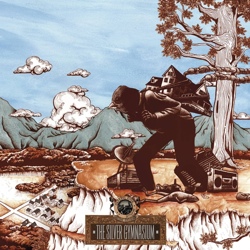 76. Okkervil River – The Silver Gymnasium (2013)
76. Okkervil River – The Silver Gymnasium (2013)
Armed with a distinctive howling tenor, a capacity for incorporating several influences in the span of a single track and a skill set for narrating harrowing tales of vice and virtue, Will Sheff has become one of indie rock’s celebrated literary minds. It’s a trend that continues on The Silver Gymnasium. But this time around, Sheff’s theme is his own past, detailing the people and places he knew while growing up in Meriden, N.H., in the ‘80s. By romanticizing his experiences of love and loss, of remembrance and regret, of functioning in the world or feeling paralyzed by it, Sheff produced a standout collection of sordid and stinging stories. The songs on The Silver Gymnasium are packed full of forbidden love, controlling parents, fizzling friendships, premature death, prostitutes and drug addicts, broken-hearted bartenders, car crashes, self-medication, loss of innocence and clinging to the promise of youth as if your life depended on it. Sheff’s songs ooze with longing, and they throw you into a world that is unfamiliar yet immediately recognizable. The album grows on you, and sooner or later its nostalgia becomes your own—only the names and places are different. —Michael Danaher
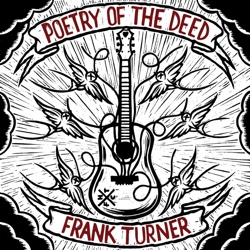 75. Frank Turner – Poetry of the Deed (2009)
75. Frank Turner – Poetry of the Deed (2009)
Despite the acoustic guitar, Frank Turner’s punk roots show on his third solo record, Poetry of the Deed, especially when he spits out the title track’s earnest manifesto: “Pentameter in attack, iambic pulse in the veins, free verse powered of the street light mains / An Iliad played out without a shadow of doubt between the end of the club, yeah, and the sun coming out … Enough with words and technical theses, let’s grab life by the throat and live it to pieces.” The album is full of vivid, passionate, literate punk tunes, but its vim and vigor are made all the more refreshing by a sweet and honest appeal to his parents called “Faithful Son” and a tender love song called “The Fastest Way Back Home.” —Josh Jackson
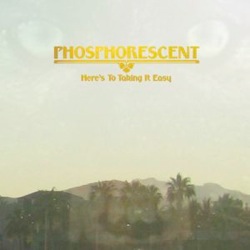 74. Phosphorescent – Here’s to Taking It Easy (2010)
74. Phosphorescent – Here’s to Taking It Easy (2010)
In 2009, Phosphorescent braintrust Matthew Houck released a tribute to Willie Nelson featuring 11 covers that avoided obvious hits and sentiments. He and his honky-tonk band obviously learned from that endeavor: The songs on the gorgeously sadsack follow-up, Here’s to Taking It Easy, evoke lost days and lonely nights with keen observations and road-weary melodies. “Baby, all these cities, ain’t they all startin’ to look all the same?” Houck laments on the rip-roaring opener “It’s Hard to Be Humble (When You’re from Alabama),” as the horn section roars ahead with trucker’s speed and the pedal steel somehow evokes both Junior Brown and My Bloody Valentine. All of Houck’s Southern eccentricities remain gloriously intact, from his eloquently hangdog vocals to his minimalist songwriting on “Hej, Me I’m Light.” Best of all is “The Mermaid Parade,” an ode to a bicoastal break-up that’ll have you shedding a tear in your PBR. —Stephen M. Deusner
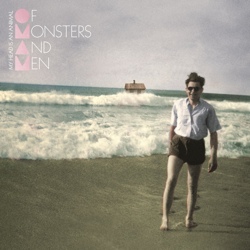 73. Of Monsters And Men – My Head Is an Animal (2011)
73. Of Monsters And Men – My Head Is an Animal (2011)
Formed in Reykjavík in 2009 out of the remnants of the members’ former solo projects, Of Monsters and Men became a local favorite in their home country after winning a nationwide battle of the bands—Músiktilraunir—in 2010. And the group is at its best when all six instrumental and singing voices are heard. On My Head Is an Animal, Nanna Bryndís and Ragnar “Raggi” Þórhallsson’s harmonies and alternating vocal leads shine in tunes like opener “Dirty Paws” and “Mountain Sound.” The instrumentation, which also features melodica, glockenspiel, accordion and horn flourishes (as exemplified in “Little Talks” and the outro/reprise of “Lakehouse”) keep the band from genre pigeonholes. And the members’ excitement—the unbridled joy of just playing together—that’s felt on each up-tempo song is simply contagious. —Hilary Saunders
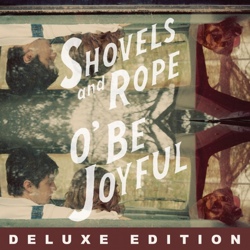 72. Shovels & Rope – O Be Joyful (2012)
72. Shovels & Rope – O Be Joyful (2012)
Cary Ann Hearst and Michael Trent are notable singer/songwriters in their own right. Hearst released 2010’s Are You Ready To Die EP through Filter US Recordings, and landed one of its songs—the brash “Hell’s Bells”—on the True Blood soundtrack. But together, as Shovels & Rope, Hearst and Trent share a remarkable chemistry. Her Wanda Jackson wail is so brassy and compelling, it’s hard to imagine a complementary foil, but she finds it in Trent, whose more tempered vocal adds some stability without dampening the impact. —Bryan C. Reed
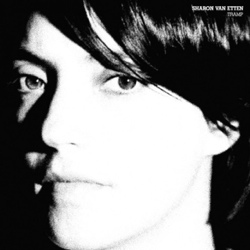 71. Sharon Van Etten – Tramp (2012)
71. Sharon Van Etten – Tramp (2012)
For 47 minutes on her breakout third album, Sharon Van Etten is right there with you, whispering her tortured lullabies into your ear in the most intimate manner. It feels like an artful exchange, a private conversation between artist and listener. Despite vivid, winding melodies; transcendent singing; and a who’s who of indie-rock guest stars (including Beirut’s Zach Condon, The National’s Bryce Dessner and Wye Oak’s Jenn Wasner), it’s shocking how minimal, how fragile, these songs are. Though there are dense instrumental textures rumbling in the distance, Tramp is built mostly on sparse acoustic guitar. Its revelations are fixed in that intimacy, that private conversation Van Etten has designed to share with you, and you alone. —Ryan Reed
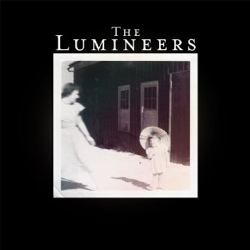 70. The Lumineers – The Lumineers (2012)
70. The Lumineers – The Lumineers (2012)
The Lumineers’ debut record is instantly gratifying—and not in the hasty, shallow way often found in pre-fab pop songs. While some records take days or months to properly digest, there’s an instant connection here, and that camaraderie is evident both onstage and on the record. Neyla Pekarek’s graceful strings, the steady roll of Jeremiah Fraites’ on the drums, and the charming twang of lead singer Wesley Schultz generate a sense of warmth and candor that the recent folk revival often misses. The rustic trio marries uplifting jubilee and poetic earnestness with ease. The foot-stomping single “Ho Hey” builds momentum with a tambourine and carries the melody with spirited chants and hand claps, a track so cheerful and exhilarating it seems built for a live stage. The album is overflowing with upbeat Americana gems, but the real power here is found in the more somber tunes. Schultz and Fraites formed the band after Fraites’ younger brother and Schultz’s best friend died of a drug overdose. The pair picked up the pieces and later found Pekarek and the formula for The Lumineers. On their debut, they channel those dark and vulnerable moments in heartfelt highlights throughout. —Alexandra Fletcher
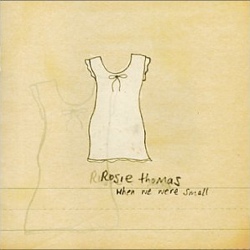 69. Rosie Thomas – When We Were Small (2001)
69. Rosie Thomas – When We Were Small (2001)
It’s hard to fathom that the same label that introduced the world to Nirvana also brought us Rosie Thomas. Her SubPop debut was a quiet, sublime album of intimate and earnest songs, but her simple arrangements of piano and strings received airplay on college radio next to Sleater-Kinney and Blackalicious. Thomas’s soulful voice sounds like a pile of white goose feathers and satin sheets, somewhere you can curl up and find comfort and rest. The album opens with the sweet, shuffling “Two Dollar Shoes,” a guardedly optimistic song of lasting love that transitions into the somber lament “Farewell,” as Thomas sings, “I was wrong I guess / I was wrong I confess / I miss the way / I miss the way you sing with me,” layered over sparse piano. By track three, she’s already building back into a hopeful and carefree contentedness on the beautiful “Wedding Day.” The rest of the album bursts with more beautiful sadness—for losing love in “Lorraine” and “Finish Line,” for missing the joys of childhood in “I Run,” and for an abused wife in “Charlotte”—with Thomas’s resolute strength always filtering through. On the closing track, “Bicycle Tricycle,” she yearns for her tricycle, her strawberry-red flower dress and her roller skates to protect her from “every boy that falls in and out of love with me.” The arrangement of piano, cello, guitar and drums builds and fades and builds and fades, as audio clips from her childhood reveal the Thomas family gathered in warm conversation. —Josh Jackson
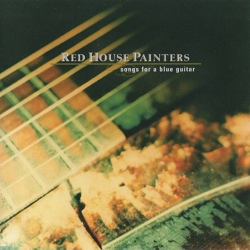 68. Red House Painters – Songs for a Blue Guitar (1996)
68. Red House Painters – Songs for a Blue Guitar (1996)
Before Mark Kozelek performed as Sun Kil Moon and gained a late-career reputation for mouthing off at unassuming festival bill-sharers (cough The War On Drugs cough), he fronted San Francisco mope-rock project Red House Painters. Songs For a Blue Guitar is a standout, comprising acoustic-led ballads that run the gamut from somber to upbeat (and always contemplative). Between emotive camp-fire singalongs (“Have You Forgotten,” “All Mixed Up”) Kozelek hits the distortion pedal on the propulsive “Long Distance Runaround.” Songs is, above all, though, one of Kozelek’s most accessible works (i.e., what you’ll like if you’re not here for his rantier, more recent records), overflowing with memorable couplets like “You are the dark in my soul / And it’s your love that I steal / And you’re my cuts that won’t close / And this I’m certain.” It’s rainy-day music at its finest. —Rachel Brodsky
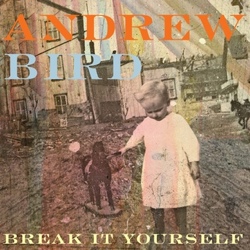 67. Andrew Bird – Break It Yourself (2012)
67. Andrew Bird – Break It Yourself (2012)
Andrew Bird follows the same definition of “quirky” that people use for Wes Anderson movies —his interests are certainly idiosyncratic, but somehow the definition feels too overreaching, like using Instagram and “hipster” in the same breath. But his seventh solo album, Break It Yourself, fits those dreaded descriptors, from the titles onward. There are references to Greek mythology, to horrible international tragedies. There’s a fake palindrome (how meta!). There is, per usual, quite a bit of whistling. It is, however, a bit more reserved than the earlier Birds. Gone are the rapturous flourishes of “Fake Palindromes” and even further the weird but awesome swing revival phase in which he participated as a Squirrel Nut Zipper. What we’re left with is a guy with a violin, an embouchure of pure steel, and a set of sweet, gentle jams that will come to you with good intentions. Break It Yourself greets its listener like a friend-turned-lover making the first move: sitting on opposite ends of the couch, inching closer and putting its arm around you. By the end, you’re curled up together. —Lindsaey Eanet
 66. The Civil Wars – Barton Hollow (2011)
66. The Civil Wars – Barton Hollow (2011)
The Civil Wars seems like the moniker for a band exploring overt, loud disagreement. But the longing, melodic chamber-pop and folk from the duo of John Paul White and Joy Williams puts the emphasis on “civil”—“courteous or obliging; polite.” Barton Hollow approaches relationships and life dissatisfactions with a subdued presence reminiscent of Robert Plant and Alison Krauss’ duets. But the tranquility dissipates as the songs peak, with White and Williams escalating the volumetric power of their playing and singing, taking full control of the songs’ directions. They have no problem transitioning from tempered introspections to fiery declarations, at times within a single song. War has never been so pleasant. —Nathan Spicer
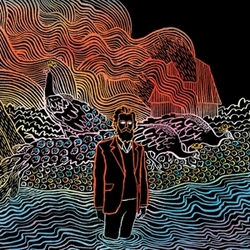 65. Iron & Wine – Kiss Each Other Clean (2011)
65. Iron & Wine – Kiss Each Other Clean (2011)
From the first notes of the fantastic, reverb-soaked “Walking Far From Home,” it’s clear that Kiss Each Other Clean picks up where 2007’s The Shepherd’s Dog left off. Sam Beam takes another step away from his lo-fi origins and experiments with more layered sounds. But the subtle power of Beam’s voice never gets drowned out or dominated by the organs, flutes and percussion. Even with a handful of new elements, the album fit comfortably into the ever-transforming Iron & Wine catalog. It may be miles away from the stripped-down beauty of 2002’s The Creek Drank the Cradle, but it’s the fruition of a series of gutsy moves by an artist who doesn’t need to whisper anymore. —Bonnie Stiernberg
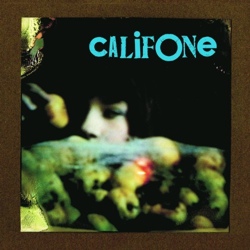 64. Califone – Roots & Crowns (2005)
64. Califone – Roots & Crowns (2005)
This is the Califone album that almost didn’t happen. As the band’s leader Tim Rutili tells it, he had moved from his longtime home of Chicago to Los Angeles and was feeling uninspired about writing music. But upon finding a mix CD that writer Mike McGonigal gave him and hearing the opening track, Psychic TV’s “The Orchids” (covered by the band on this album), he was infused with new inspiration and hope. The music that poured out of him and his bandmates feels as lush and purposeful as the tune that was Roots & Crowns’ catalyst but cut through with Rutili’s experimental leanings. It’s folk music as filtered through a faltering sampler that keeps spitting out small intrusions of field recordings and snippets of strings and jangling percussion. —Robert Ham
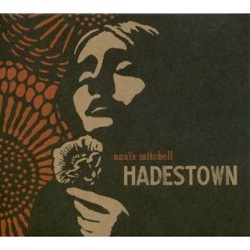 63. Anaïs Mitchell – Hadestown (2010)
63. Anaïs Mitchell – Hadestown (2010)
A musical for way, way off Broadway, Anais Mitchell’s stunning folk opera succeeds on many levels. It’s a brilliant recasting of the Orpheus and Euridice myth. It’s a pointed political commentary on what may be the downtrodden, cash-strapped America of 1933, or the downtrodden, cash-strapped America of 2010. And it features some wondrous ensemble singing, from Mitchell as Euridice, from Bon Iver’s Justin Vernon as a seductive Orpheus, from Ani DiFranco as Persephone, and, most notably, from gruff-voiced folkie Greg Brown, who imbues the lord of the underworld with both maniacal glee and Dick Cheney’s calculus of pragmatic death-dealing. —Andy Whitman
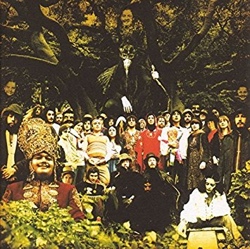 62. Devendra Banhart – Cripple Crow (2005)
62. Devendra Banhart – Cripple Crow (2005)
For all the instrumental trappings draped atop Devendra Banhart’s songs on Cripple Crow—electric guitars, strings, pianos, and drums—it remains Banhart’s stylized approach that first attracts the ear. His voice—a pinched, warbly, nasal thing—simultaneously strikes as hyper-affected and unselfconscious (and might turn a listener off instantly if heard as the former). His songs glide on an ever-shifting bed of gentle fingerpicked cross-rhythms. Cripple Crow is stacked—22 tracks across 80 minutes. Banhart seems the kind of prodigious songwriter who effortlessly breathes material. Cripple Crow resembles a dream journal of half-remembered morningtime fragments. When it succeeds, as on the surreal, utopian near-rag of “Some People Ride the Wave” (“Me, I ride the wave of never-gonna-drown!”) and the 59-second tone poem “Dragonflies,” Banhart taps a magically easygoing energy that seems drawn from San Francisco in the mid ’60s (or maybe just the late ’90s). There’s some chaff here, but Cripple Crow also reveals an embarrassment of riches. —Jesse Jarnow
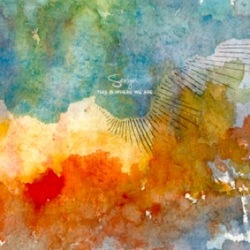 61. Seryn – This Is Where We Are (2011)
61. Seryn – This Is Where We Are (2011)
With mostly acoustic instruments—ukulele, banjo, accordion, violin, cello and trumpet—and soaring choruses, this Denton, Texas, quintet builds nearly every song into a joyful crescendo adding voices—and urgency—as it progresses. That’s never more apparent than on “We Will All Be Changed,” which gets exponentially better with every decibel you turn it up. The band went on indefinite hiatus in 2016 after moving to Nashville, but left behind this near-perfect snapshot of a time when anything was possible: three multi-instrumentalist buddies living together in a college town, playing house shows, and figuring out what was possible in the studio. Their optimism lives on in every vinyl groove. —Josh Jackson
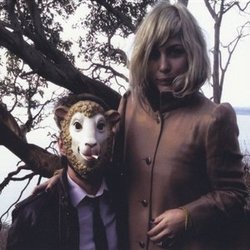 60. The Head and the Heart – The Head and the Heart (2009)
60. The Head and the Heart – The Head and the Heart (2009)
Scruffily handsome folkies are a dime a dozen in Seattle. What differentiates The Head and the Heart from the rest of the flannel-wearing pack, beyond the band’s unnaturally speedy climb from dive bars to main-stage festival spots, is its penchant for mixing rootsy Americana with orchestral, chest-swelling chamber-pop. Violin and piano help elevate the songs beyond their earthy origins, and three-part harmonies—anchored by co-frontmen Josiah Johnson and Jonathan Russell, and boosted by the Cat-Power-gone-Appalachian crooning of violinist Charity Rose Thielen—sweeten the deal. —Andrew Leahey
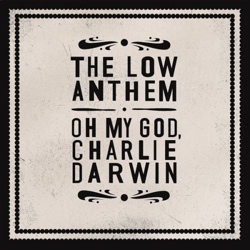 59. The Low Anthem – Oh My God, Charlie Darwin (2008)
59. The Low Anthem – Oh My God, Charlie Darwin (2008)
Charles Darwin hasn’t taken this much abuse since the days of William Jennings Bryan. But while creationists fight the theory of evolution in schools, this Rhode Island band attacks the societal applications of “survival of the fittest.” “And who could heed the words of Charlie Darwin,” Ben Knox Miller laments in a lovely, layered falsetto, “The lords of war just profit from decay.” If The Low Anthem’s argument is for community and collaboration, Exhibit A is the gorgeous chamber folk this trio of multi-instrumentalists crafted on its third album. Following the path cleared by Nick Drake and Tim Buckley, The Low Anthem is at its best composing songs fit for a hipster orchestra, with Knox’s delicate vocals backed by an assortment of quirky instrumentation. After two tracks of quiet intimacy, the band erupts into a pair of foot-stompers, grounding an album that otherwise might get blown away by the slightest breeze. Jack Kerouac-by-way-of-Tom Waits tune “The Horizon is a Beltway” and the roadhouse rumpus “Home I’ll Never Be” wouldn’t sound out of place on an Avett Brothers’ record, and they balance the quieter tracks. Whether soft or loud, these 12 songs are exquisite. —Josh Jackson
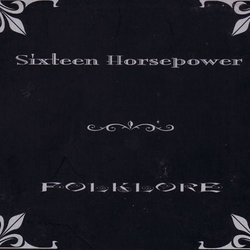 58. 16 Horsepower – Folklore (2002)
58. 16 Horsepower – Folklore (2002)
Few albums truly exhibit the inscrutable mystery and inescapable desperation of the world as Folklore. Somehow, David Eugene Edwards and his band explored the edges of those vanished territories of the American folk-music tradition, channeling the fear of now lost pastorals.The most meditative, haunting release of 16 Horsepower’s Holy Ghost-haunted catalog, Folklore takes further the shiver-inducing despondency of past releases, here relying on droning cellos, wheezy accordions, spindly banjos and Edward’s eerily double-tracked vocals to create an atmosphere of despair and impending doom. Stripping away most of the electric guitars and rhythmic drive of their previous work, the album rarely breaks from the dirge-like ruminations on God, judgment, love and murder. That only four of the 10 tracks are original doesn’t inhibit the authenticity with which they’re presented. Folklore speaks with the earthward metaphors of those who lived in the shadow of unseen pursuers and confronted their worst suspicions with music as their weapon. —Matt Fink
 57. Kurt Vile – Wakin on a Pretty Daze (2013)
57. Kurt Vile – Wakin on a Pretty Daze (2013)
Kurt Vile sings his first line some 40 seconds into the first song of i>Wakin On a Pretty Daze, and the crispness and clarity of those words let you know that something is different about this album. While his early releases were more a collage of loose ideas organized around a singular, murky sound, Daze presents 11 carefully composed tracks with beginnings, middles and ends. Vile was always a contemplative songwriter, but here his lyrics became more ponderous and worldly rather than navel-gazing. Themes of movement and escape are the bedrock, providing a calming balance—lyrically, thematically, sonically. It closes exactly as it begins, with a long, winding, peaceful melody—one of the prettiest Vile has ever penned. “In the night when all hibernate, I stay awake, searching the deep, dark depths of my soul,” he says. He describes his process of finding that one moment, the “golden” tone. It’s a beautiful song about—what else—the nature of writing a beautiful song. —John Hendrickson
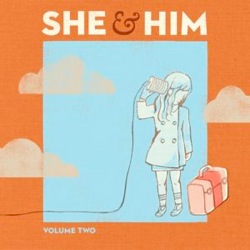 56. She & Him – Volume Two (2010)
56. She & Him – Volume Two (2010)
She & Him’s debut was a simple affair. Zooey Deschanel’s homespun grace and M. Ward’s unobtrusive production made for a winning combination—which means they risked a lot by making a follow-up album as complex and ambitious as this one. On Volume Two, swirling strings and lush backing vocals underscored Deschanel’s increasingly sophisticated songwriting. She plays the dewy-eyed ingénue a bit too faithfully at times, but there is no denying her legitimacy as a tunesmith, divvying her set between bouncy piano-pop, folk-flavored sing-alongs and orchestral anthems. In lesser hands, the American Graffiti-styled themes of star-crossed lovers and summer nights would drown in their own sincerity. Here, they provide a pleasant escape to a mythical America of endless horizons and youthful resilience—not such a bad place to be. —Matt Fink
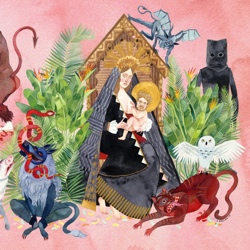 55. Father John Misty – I Love You Honeybear (2015)
55. Father John Misty – I Love You Honeybear (2015)
Josh Tillman’s creative persona feels like a natural extension of his sprawling and strange backstory: He’s part cultural provocateur, part hippie-rock satirist, part soulful balladeer. What’s most surprising about I Love You, Honeybear is how it balances that cartoonish character with the real-life Tillman. Honeybear thrives on the knife’s edge of that enigmatic split personality, as he attempts to reconcile the love-swept optimist with the world-weary wise-ass. Fittingly, the LP’s most striking moments meditate on the sublime and deeply complicated art of sharing life with a single partner. The title track is an apocalyptic love song submerged in waltzing, Spector-styled orchestrations—with Tillman embracing his wife, at peace as they drown. Sonically, Honeybear finds Tillman in a ruminative mood, favoring lavish strings, sweeping layers of voices and acoustic guitars. But he still has a knack for unexpected flourishes, like the psychedelic guitar solo on “Strange Encounter.” With I Love You, Honeybear, Tillman wrestles with a lot of heady subject matter: modern narcissism (“Bored in the USA”), his tendency to doom personal relationships (“The Ideal Husband”), the general downfall of mankind (“Holy Shit”). But the less he strains, the more his songs resonate. On threadbare closer “I Went to the Store One Day,” his voice skirts into falsetto over hushed fingerpicking and strings, as he croons about buying a plantation with his wife and letting the yard grow wild—and how that dream originated from a chance parking lot hello. —Ryan Reed
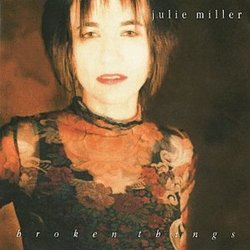 54. Julie Miller – Broken Things (1999)
54. Julie Miller – Broken Things (1999)
A little girl voice that hols ages, “Broken Things” offers redemption as well as deep love for those damaged by life. For Julie Miller, salvation is always peeking through the cracks of songs. Beyond the divine, there is the charismatic “I Need You,” the Appalachian dirge “Orphan Train” and the percussively minor-keyed creeper “Strange Lover,” an homage to—of all things—cocaine. Emmylou Harris would record the shimmering “All My Tears” and Lee Ann Womack would embrace “Orphan Train” and “I Know Why The River Runs” further broadening Miller’s reach. But the songwriter with a dexterous voice that does many things—howl, coo, caress and throttle—remains her own best interpreter. “I Still Cry,” a straightforward elegy, suggests the way some people linger in unlikely ways long after they’re gone, with the sorrow profoundly transparent in her tone, bringing both naked vulnerability and intuitive playing that exemplifies the best of Americana. —Holly Gleason
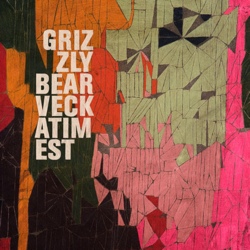 53. Grizzly Bear – Veckatimest (2009)
53. Grizzly Bear – Veckatimest (2009)
After spending 2008 opening for Radiohead and appearing on late-night TV shows, Grizzly Bear was suddenly ubiquitous—even without a new album to promote. But while they were on stage they perfected the material that would comprise their third full-length release, and Veckatimest sounds like the final product of a meticulous and exacting evolutionary process—one that adds depth and color to their swooning chamber pop arrangements, crispness to their intricate rhythms and intensity to their careful performances. Their group mind pulsating in unison, the scrappy quartet are wistfully plaintive on the gorgeously swaying “Two Weeks,” pristinely longing on the spectral “Dory” and haunting on the darkly lunging “I Live With You.” But underneath the orchestral flourishes and children’s choirs, beneath even the frequent textural shifts and melodic detours, are a set of melodies that find novel ways to cut straight to the listener every time. —Matt Fink
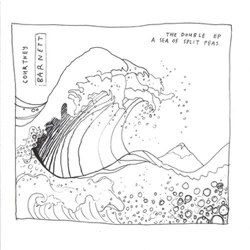 52. Courtney Barnett – The Double EP: A Sea of Split Peas (2013)
52. Courtney Barnett – The Double EP: A Sea of Split Peas (2013)
When it comes to storytelling, Courtney Barnett is as clever they come. The Australian singer/songwriter garners her share of giggles and smirks with songs that tackle subjects as diverse as amateur gardening (“Avant Gardener”) and drunken dreams where artists “made their paint using acid wash and lemonade” (“History Eraser”). For every whimsically stoney lyric on The Double EP: A Sea of Split Peas, there are as many moments of sheer shred-ability from Barnett’s left-handed tail-spins on the guitar. A combination of two earlier EPs, this was our introduction Barnett’s catchy, endearing musings. She finds ways to loop guitar solos into poppy verses, yet she avoids extremes. On “Are You Looking After Yourself,” she opens with a twangy guitar into her isolated vocals and arrives at a full-on-folk implosion that’s utterly danceable. She repeats the pattern as it intensifies with the existential proclamation of “I don’t need to 9-to-5, telling me that I’m alive!” There’s a confidence in place that make Barnett’s American debut one of the most flat-out-fun records of the past few years. —Adrian Spinelli
 51. Beirut – The Rip Tide (2011)
51. Beirut – The Rip Tide (2011)
Zach Condon’s Beirut is in a funny position. He cut his teeth on staunchly outsider Balkan folk, but he’s also one of the premier indie-Billboard crossover successes. His band spans 11 members, but he primarily composes lighthearted, three-minute pop songs. He’s got all the trappings of a critic’s darling, but his pedigree never quite positioned itself in the auteur company of singular songwriters like Justin Vernon and Will Oldham. With that propulsive buzz, one might have expected The Rip Tide to be a towering statement, but that isn’t the case. Not only is it the shortest item in the Beirut catalog, it’s also the breeziest; sounding confidently assured in its identity—which unsurprisingly makes it Condon’s most immediately enjoyable record. —Luke Winkie
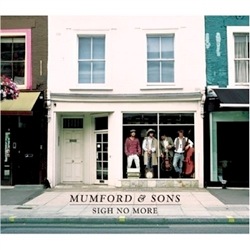 50. Mumford & Sons – Sigh No More (2009)
50. Mumford & Sons – Sigh No More (2009)
Sigh No More flutters to life with an apology. In an ethereal four-part harmony, the British foursome intones Benedict’s line to Beatrice from Much Ado About Nothing: “Serve God, love me and mend,” and then the voices swell in unison: “And I’m sorry.” It’s one of the only pastoral moments on the band’s hour-long debut LP, but the sentiment lingers. More than anything else, this is an album bursting at the seams with gorgeous remorse. The tired snivels of the spindly-armed strummer have no place here; it’s an amped-up, bass-heavy, banjo-picking pity party made of the same violent stuff that once inspired a lusty 17th-century cleric to demand of his deity: “Batter my heart.” From that first flowery track to “Little Lion Man,” where frontman Marcus Mumford croaks: “It was not your fault but mine, but it was your heart on the line,” to “Timshel,” where he laments “Death … will steal your innocence,” it’s wide-eyed, giddy yawp of an almost saccharine nature. Lyrical subtlety is not Mumford & Sons’ strong suit, and it doesn’t matter at all. Sign No More works because it’s commanding in all aspects of its presentation. —Rachel Dovey
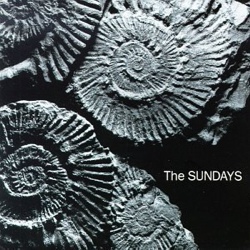 49. The Sundays – Reading, Writing and Arithmetic (1990)
49. The Sundays – Reading, Writing and Arithmetic (1990)
While Seattle may have been a noisy place in the early ’90s, there were plenty of pockets of mellow for lovers of independent music, and few as were as memorable as Harriet Wheeler and David Gavurin’s band from Bristol, England. With their Smiths-inspired melodies, chiming guitar lines and the magnetic vocals of Harriet Wheeler, the Sundays created enough buzz from their first club shows to become quickly involved in a bidding war among labels, with Rough Trade earning the honors for their debut, Reading, Writing and Arithmetic. Nearly three decades later, it remains one of the defining British albums of its era. —Josh Jackson
 48. The Antlers – Burst Apart (2011)
48. The Antlers – Burst Apart (2011)
The Antlers’ fourth album showcases a band that had mastered the seductive art of building quiet texture into a crash of energy, reaching for the stars with every chance they get. “Putting the Dog to Sleep” might be the best song Peter Silberman has ever written—like most of his songs, it’s wrenching, dramatic and ultimately triumphant. He croons like a soul singer, his voice occasionally cracking under the weight of emotion, with each of his heavy admissions punctuated with a clashing guitar. Burst Apart is a record of big songs from a Brooklyn band good at generating big songs, but it was just as notable that they could be impressive without an overarching concept behind them. —Luke Winkie
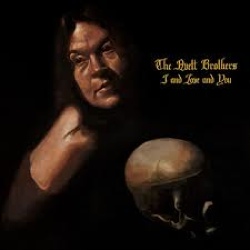 47. The Avett Brothers: I and Love and You (2009)
47. The Avett Brothers: I and Love and You (2009)
For their artistic breakthrough, these future arena-fillers from North Carolina polished their scruffy Americana sound until it gleamed. The result: an overpowering acoustic album brimming with sadness and soul. “I was worried that I’d start crying while listening at work, but I waited until I got home,” a Paste colleague told me. That’s an accomplishment. The title track—a meditation on three little words—is a three-hanky affair unto itself. —Nick Marino
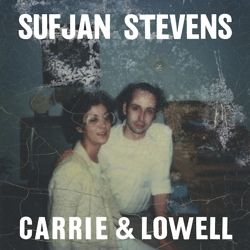 46. Sufjan Stevens – Carrie & Lowell (2015)
46. Sufjan Stevens – Carrie & Lowell (2015)
After the brash electronica of 2010’s Age of Adz, Sufjan Stevens returned with a quiet, moody set of songs that, at first blush, conjured his music from the early 2000s. But there is something fundamentally different about Carrie & Lowell. It is urgent and spontaneous, featuring songs written in a rush of cathartic emotion on whatever instrument happened to be laying around. No three-minute orchestral intros to be written or historical facts to be researched here. It’s more Elliott Smith’s XO than Illinois—and like XO, it has its eyes focused squarely on death. It stares straight into the hospital rooms, regrets, cloudy memories and empty bedrooms—and dares to sing a quiet, beautiful song about them all. Perhaps that ended up being more ambitious than another “State Project” album could have ever been. —Luke Larsen
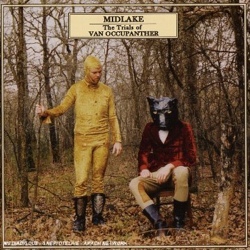 45. Midlake – The Trials of Van Occupanther (2006)
45. Midlake – The Trials of Van Occupanther (2006)
After a debut of ’60s psych-pop revivalism dressed up with enough synthesizers and lo-fi sensibility to keep it modern, Midlake’s second album, The Trials of Van Occupanther, pulled up stakes, abandoned its late-’60s fairground, and moved a few years forward to the far less trod-upon terrain of the early ’70s. The album explodes with “Roscoe,” a forceful, assured song, unmistakably the product of countless hours listening to Neil Young, but polished to a fine Fleetwood Mac sheen. Next comes the soft-folk production of “Bandits,” a Nick Drake rip with a twist: singer Tim Smith makes no attempt to evoke the iconic and oft-copied wispy vocals of “Pink Moon.” As the album continues, the references start to melt into a pleasant mélange—CSN harmonies coexist peacefully with orchestral piano-pop flourishes and Midlake’s synthesized elaborations, all measured out and stirred together with perfectionist precision. —Thomas Bartlett
 44. tUnE-yArDs – w h o k i l l (2011)
44. tUnE-yArDs – w h o k i l l (2011)
At times, Merrill Garbus is Annie Lennox, and at others, she’s Prince. One thing’s for sure though—she’s always entertaining, and her powerhouse voice makes W H O K I L L one of the must-listens of the 2010s. She can do ethereal and understated better than most, but Garbus is truly in her element when she’s belting, her hurricane alto ripping through a uniquely layered soundscape of ukulele, bass, saxophone and percussion. On “Killa,” she proudly declares, “I’m a new kind of woman, I’m a new kind of woman, I’m a don’t-take-shit-from-you kind of woman.” It’s nearly impossible to listen to a tUnE-yArDs track and not feel empowered. —Bonnie Stiernberg
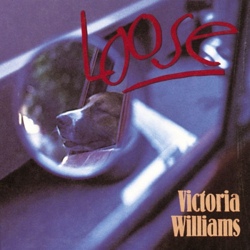 43. Victoria Williams – Loose (1994)
43. Victoria Williams – Loose (1994)
Victoria Williams’s biggest moment in the sun came via 1993’s Sweet Relief album, where her songs were covered by Lou Reed, Pearl Jam, Soul Asylum and The Jayhawks to help raise money for health costs after she was diagnosed with multiple sclerosis. One of those songs, “Crazy Mary,” would appear the next year on Loose, her third and best full-length. On it, Williams also sings a duet with her future husband, The Jayhawks’ Mark Olson, “When We Sing Together.” There’s a tenderness and fragility to these tracks that fits perfectly with her idiosyncratic lyrics, filled with an emotional depth, whether she’s singing about her dog, her grandfather, her crazy childhood neighbor or her soon-to-be husband—or just letting you know You R Loved. —Josh Jackson
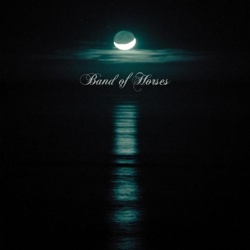 42. Band of Horses – Cease to Begin (2007)
42. Band of Horses – Cease to Begin (2007)
“Southern rock” has traditionally evoked muttonchops and the devil going down to Georgia, but the genre’s tapestry also includes the kaleidoscopic psychedelia of early R.E.M. and the reverb-limned keening of My Morning Jacket. Band of Horses arrived firmly aligned with the latter camp, but born of Seattle’s omnipresent rainstorms and attendant coffeehouse culture. Singer/guitarist Ben Bridwell, a born Southerner, convinced his bandmates to return to his native South Carolina, a place he fled after finding himself in a “whole bunch of trouble.” The band’s sophomore release, the Churchillian-titled Cease to Begin, marked a new chapter in Band of Horses’ development, as well as a shift in Bridwell’s writing, veering from the soft-focus impressionism toward a more narrative-driven style. More than anything, Cease to Begin represents the sound of a talented writer growing more comfortable in his skin and unafraid to name a song after ex-Seattle Supersonic Detlef Schrempf despite its elegiac, unrelated subject matter. —Corey DuBrowa
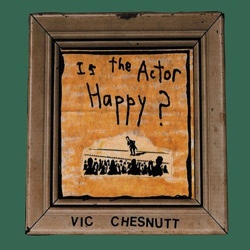 41. Vic Chestnutt – Is the Actor Happy? (1995)
41. Vic Chestnutt – Is the Actor Happy? (1995)
He was killing himself to live before the notion was a bumper sticker, and now he’s a legend the wider world never quite found out about (even though he’s been covered by Madonna). Chesnutt was a rolling contradiction. His songs scanned like nursery rhymes but stuck—as he sang on “Betty Lonely” from Is the Actor Happy?, “like a flounder gig”—on polysyllabic turns of phrase that tease the ear as they beg for the Oxford English Dictionary. Elegant and ungainly, impish and morbidly depressed, flat-assed drunk and piercingly sober, his salient obsessions circled around private peculiarities and public personae, scrawled like graffiti on the wall of a gas station, glimpsed through the Spanish moss. His wounded warble was an epic surprise, too: sweeping like Marvin Gaye, in its way, and teetering with uncertainty—like a bastard Wallenda, who defied gravity out of sheer heart. —Steve Dollar
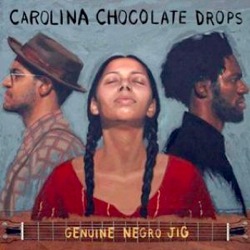 40. Carolina Chocolate Drops – Genuine Negro Jig (2010)
40. Carolina Chocolate Drops – Genuine Negro Jig (2010)
The Carolina Chocolate Drops formed in 2005 at the Black Banjo Gathering in Boone, N.C., and from that point forward the young trio was determined to a wider audience that African-Americans played a huge role in the nation’s stringband tradition. To do that, they dusted off a musical form seen today as either a novelty or the exclusive provenance of ethnomusicologists. To paraphrase Rakim’s immortal words, these Drops ain’t no joke: Their enthusiasm for the tradition is obvious even as the trio spans from traditional arrangements (the rollicking fiddle rave-ups “Trouble in Your Mind” and “Cindy Gal”) to self-penned works (the particularly terrific “Kissin’ and Cussin’”) and stringband makeovers of modern-day works (a hip-hop influenced cover of Blu Cantrell’s “Hit ’em Up Style (Oops!)” and Tom Waits’ “Trampled Rose”). —Corey DuBrowa
 39. The Waterboys – Fisherman’s Blues (1988)
39. The Waterboys – Fisherman’s Blues (1988)
While folk-rock thrived in the U.S. during the 1970s, The Waterboys’ blending of ’80s rock and the Celtic roots of the Irish, Scottish and English members was refreshing. When Fisherman’s Blues came out in 1988, Mike Scott and his very large band had almost completely shed their arena-rock leanings for a more traditional tour de force that name-checked Hank Williams and quoted William Butler Yeats. Sounding unlike anything that came before, it filtered old Irish tunes through a decidedly college-rock lens. —Josh Jackson
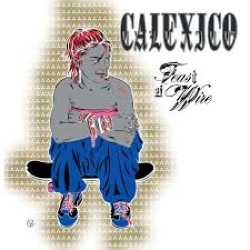 38. Calexico – Feast of Wire (2003)
38. Calexico – Feast of Wire (2003)
Calexico co-founders Joey Burns and John Convertino hear the world differently than most people. Not everyone would have imagined that surf guitar reverb would sound so at home beneath a blast of mariachi trumpet. Or that an acoustic Portuguese fado wouldn’t clash with an electric Norteño rave-up. Or that the lonesome cry of a pedal-steel guitar could flourish next to a symphony orchestra’s string section. Feast of Wire is the Tucson, Ariz., band’s masterwork of musical alchemy. While their proximity to the Mexican border is still a strong influence, Calexico raises the ante here with more song styles, instruments and collaborators. The result further proves that variety can provide just the right musical chemistry. Given the somber nature of some of the subject matter, many of the songs on Feast of Wire are unashamedly melancholic. But all are emphatically vibrant and ultimately spiritually fulfilling because of the beauty of their construction and the honesty of their execution. —John Schacht
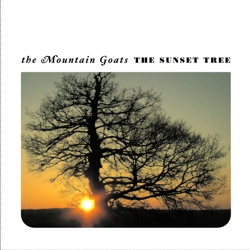 37. The Mountain Goats, – The Sunset Tree (2005)
37. The Mountain Goats, – The Sunset Tree (2005)
In 2005, John Darnielle and The Mountain Goats were on the road when Darnielle learned that his abusive stepfather had died. When he started to write again, he poured his conflicting mess of feelings into The Sunset Tree, recalling how he used to turn up the “Dance Music” as “my stepfather yells at my mother / Launches a glass across the room, straight at her head.” Channelling youthful rebellion and a touch of bitter optimism, Darnielle recalls speeding away from his “broken house” to distract himself with a mixture of alcohol and women, sing-screaming, “I AM GONNA MAKE IT THROUGH THIS YEAR IF IT KILLS ME.” He again imagines a better place on “Hast Thou Considered the Tetrapod,” remembering how he once woke his stepfather up and prayed he wouldn’t break his stereo in retribution. In giving The Sunset Tree over to this man, Darnielle explores a non-linear, irrational series of reactions. By letting himself feel, it’s he can be free of them. —Rachel Brodsky
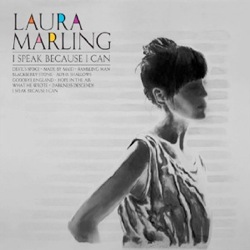 36. Laura Marling – I Speak Because I Can (2010)
36. Laura Marling – I Speak Because I Can (2010)
Laura Marling had just turned 18 when she released her 2008 debut, Alas, I Cannot Swim, but it seemed like she’d already lived four or five lifetimes. By then, she had somehow digested much of British folk music along with her guitar lessons, in the process becoming world-weary enough to write lines like “The gods that he believes never fail to disappoint me” and “Don’t cry child, you’ve got so much more to live for / Don’t cry child, you’ve got something I would die for.” After touring the globe and being touted as the young queen of a new-folk revival, Marling made yet another gorgeous, melancholy, old-souled record. Despite its uncanny emotional weight, Alas has its moments of glittering girlishness and sounds at times like it was recorded in an upstairs bedroom at her parents’ house.I Speak Because I Can trades in references to broken dolls for tales of real live babies found in the forest and the yearning for a “Tap at My Window,” for the love of a “Rambling Man.” Backing band Mumford & Sons provide dirty-fingernailed accompaniment—banjos, shuddering organ and occasional brotherly backing vocals—to her blustery voice and pace-setting guitar. —Rachael Maddux
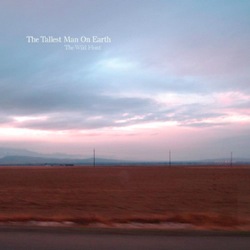 35. The Tallest Man on Earth – The Wild Hunt (2010)
35. The Tallest Man on Earth – The Wild Hunt (2010)
Kristian Matsson plays to his strengths on The Wild Hunt, his second album. He keeps it simple, finger-picking strings to propel his gristly vocal melodies, which feel simultaneously cavalier and carefully wrought. Though his acoustic guitar often thwacks like a snare, his songs are uncluttered by percussion, harmonized vocals or the orchestral ornaments that are so prevalent in alt-folk. The clean, galloping banjos and guitars spotlight Matsson’s pristine snarl, which slips down into powerful bass notes and reaches up and yelps on key, accentuating his ambitious, second-language lyrics: “I wasn’t born, I just walked in one frosty morn / Into the vision of some vacant mind,” he sings on “Burden of Tomorrow.” If Sondre Lerche were a bluegrass-loving goblin, he might sound a little like this. —Brian Howe
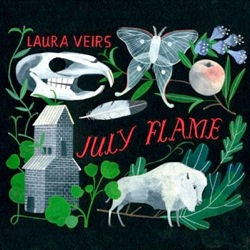 34. Laura Veirs – July Flame (2010)
34. Laura Veirs – July Flame (2010)
Laura Veirs’s seventh album, released in the blustery throes of January, takes its name from a kind of peach that finds its way into farmer’s-market bins in the hottest weeks of the year—a peach, the story goes, that cured Veirs of a bout of writer’s block one steamy Portland afternoon. Still, it’s hard to imagine a better soundtrack to the chilly months of wood smoke and crackling leaves than this collection of heady, steady, pensive songs. It’s a feel-good record of the oddest sort, a melancholy meditation on happiness and its delicate transience—warmer and rootsier than her earlier work, which had a kind of cautious experimentalism. July Flame is carefully composed, ever-deepening, glinting and glowing in new ways each time it’s played. “And so let us curl up in our burrows with these songs and our own flickering July flames ’til the green shoots return and the rivers run full again. “It’s gonna take a long, long time,” Veirs sings on her resolute final track. “But we’re gonna make something so fine.” —Rachael Maddux
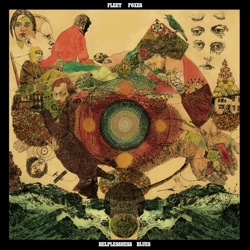 33. Fleet Foxes – Helplessness Blues (2011)
33. Fleet Foxes – Helplessness Blues (2011)
After their eponymous debut album earned a well-deserved standing ovation from critics, Fleet Foxes set the bar high for their sophomore album. Helplessness Blues is sweet and comforting at its worst and inspiring at its best. The foundations of many tracks are similar—the band frequently returns to the strumming, “ohhs” and “ahhs” that define opener “Montezuma”—but Fleet Foxes know how to layer sounds to add depth and make each song distinctive. The album is often about love — and the emptiness that can accompany its euphoria. —Ani Vrabel
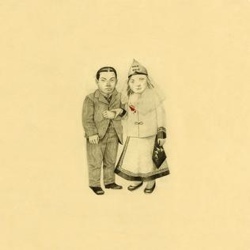 32. The Decemberists – The Crane Wife (2006)
32. The Decemberists – The Crane Wife (2006)
This beloved chamber-rock ensemble’s major-label debut topped our year-end list back in 2006. Forget sexy. Although people with an affinity for homesick soldiers, star-crossed lovers and cleaver-wielding gangsters will find plenty to swoon over, The Decemberists brought epic back—and in a big way. A classic Japanese folk tale is retold in the three-part title track, anchoring a bevy of gorgeous tunes, from the 12-minute prog-folk romp of “The Island” to the post-apocalyptic singalong of “Sons and Daughters.” Past releases have proven these fabulous fabulists some of the most innovative, intelligent fledglings in the indie world. But with The Crane Wife, The Decemberists really take flight. —Rachael Maddux
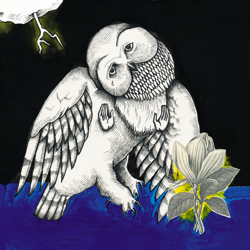 31. Songs: Ohia – The Magnolia Electric Co. (2003)
31. Songs: Ohia – The Magnolia Electric Co. (2003)
From the first swooping notes of “Farewell Transmission,” Jason Molina’s masterpiece of an album was confirmed. Hailing from the Rust Belt, Molina expertly blended the aggression of industry with a pastoral calm. On 2003’s The Magnolia Electric Co., Jeff Panall’s precise drumming and Steve Albini’s perfectly balanced engineering reflect the trends of alternative rock so prevalent in the late ‘90s and early aughts. Yet, it’s the eerie pedal-steel and warbling organ and Wurlitzer that linger, making sure that country-esque feeling remains.—Hilary Saunders
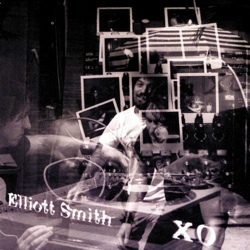 30. Elliott Smith – XO (1998)
30. Elliott Smith – XO (1998)
Elliot Smith was fresh off an unexpected Oscar nomination for “Miss Misery,” from Good Will Hunting, when the major labels came calling. He left Kill Rock Stars for DreamWorks, but it sure didn’t mean he went “mainstream.” In fact, Smith went the other way, turning the things you never want to experience—crippling heartbreak, aching despair, existential dread—into songs that you constantly want to listen to. Gorgeous, lush orchestrations, along with Smith’s oh-so-sad words soundtrack the stuff panic attacks are made of. Everybody doesn’t care. Everybody doesn’t understand. But XO sure does. Tragically, Smith would have just one more album in him. —Jessica Gentile
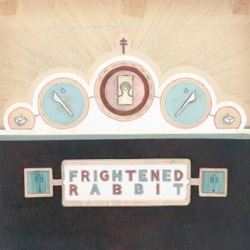 29. Frightened Rabbit: The Winter of Mixed Drinks (2010)
29. Frightened Rabbit: The Winter of Mixed Drinks (2010)
On The Winter of Mixed Drinks, Frightened Rabbit imbue their songs with sighing keyboards, screaming layers of melodious distortion, nested rhythms, choral harmonies—all the doodads that rock bands are liable to employ circa album number three. The arrangements occasion stirring moments on the epic scale of early U2—this is burnished, stadium-sized, cloud-cover rock. The change is more one of scale than style. Hutchison’s earthy, inviting voice cuts through the vast instrumentation like a ray of sunlight. This is a different sort of intimacy: The Winter of Mixed Drinks is less of a breakup record than a post-breakup record; the more pathetic feelings having hardened into self-reliant moxie. Hutchison offers the usual wallowing introspection and off-kilter epiphanies (“She was not the cure for cancer,” he suddenly gleans midway through the album), but from a bird’s-eye view. On lead single “Swim Until You Can’t See Land,”, the singer is a tiny, bobbing speck, way out past the waves, nothing but a sea of chiming guitars and swooning strings on all sides. Frightened Rabbit wrings a winning simplicity from all this august isolation. A cardiac pulse animates many of the songs, a mightily thwacking unison at the core of all the kaleidoscopic embellishment. —Brian Howe
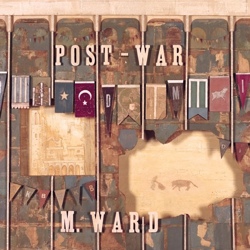 28. M. Ward – Post-War (2006)
28. M. Ward – Post-War (2006)
Nobody’s ever going to mistake M. Ward for the life of the party. Along with his decidedly dour disposition, his penchant for hushed introspection creates a mix of ambiance and atmosphere that impacts the music more than the melodies themselves. While Post-War affirmed that stance, the occasional hint of revelry found in “To Go Home,” “Neptune’s Net,” “Chinese Translation” and “Magic Trick” provided a momentary uptick, enhancing the accessibility factor with genuine folk finesse. —Lee Zimmerman
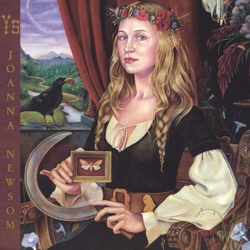 27. Joanna Newsom – Ys (2006)
27. Joanna Newsom – Ys (2006)
The expansive lyrical content and layered allusions of Ys can be pretty hard to follow. Newsom challenges listeners to keep pace on this 47-minute, five-song set, but it’s pure joy to follow poetry this cunning and clear. Van Dyke Parks’ production, complementing Newsom’s own jaunty harp compositions, is like a film soundtrack—shading the lyrical content with various moods that range from excitement to confusion to mourning in conjunction with the story. The record takes on a mythical cast, but if Newsom is delivering a parable, she leaves it to the listener to determine the moral of the story. “Sawdust & Diamonds” is just as dense as the rest of the tracks on the record, but the song has a uniquely visual quality thanks to its lyrics. And, as in “Monkey & Bear,” there is a cinematic excitement to the tunes, a sense of adventure and mystery as the imagery plays on the inner eye. —Nate Logsdon
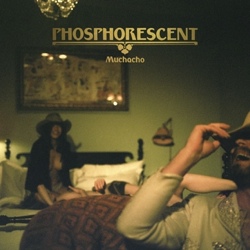 26. Phosphorescent – Muchacho (2013)
26. Phosphorescent – Muchacho (2013)
Muchacho aims big. Like the lacerating kiss-offs in Blood on the Tracks, Muchacho’s lyrics map continents of separation and wandering to represent the distance between ex-lovers. Like the panoramic scope of Joshua Tree, the album’s sonic textures capture wonder and immensity while keeping both bootheels on the ground. Like the benders and busts of Grievous Angel, Muchacho pursues both sin and absolution and offers apology for neither. And like Robbie Robertson in his solo debut, Matthew Houck—Phosphorescent’s sole proprietor—adapts contemporary tools and technology to blend troubadour folk, Nashville country and Southern rock into a sound that’s fully his own. Muchacho recapitulates the moment of love’s collapse and catapults out into the companionable lonesome that waits. The contours of the physical and emotional landscape are set by the monumental “Song For Zula”—windswept by the arid atmospherics of solo Daniel Lanois and solidifying around adamantine strings, the track cycles the storm-gathering grandeur of “With or Without You” through the defiant heart of Dixie. Houck works with elements of sand and soil and gold and steam to cast love in some comprehensible form of relief. —Nathan Huffstutter
 25. Jens Lekman – Night Falls Over Kortedala (2007)
25. Jens Lekman – Night Falls Over Kortedala (2007)
That string-soaked introduction. That syrupy baritone. A sense of drama and a sense of humor. “I will never kiss anyone / who doesn’t burn me like the sun.” From the elaborate construction of Night Falls Over Kortedala’s opener, “And I Remember Every Kiss,” it’s clear that Jens Lekman favors a little pomp and circumstance. But it suits the talented Swede. Lekman’s always been an excellent songwriter, combining the wit and charming carelessness of Jonathan Richman with the alternately lovelorn/loveable aesthetic of Morrissey and Magnetic Fields, and Kortedala finds the bard’s talent at its most fully-realized, all samples, horns, beats and just a touch of kitschy grandeur. —Austin L. Ray
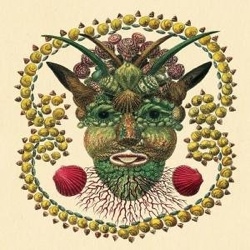 24. Akron/Family – Akron/Family (2005)
24. Akron/Family – Akron/Family (2005)
When Akron/Family emerged from their then-home base of Brooklyn in the early ’00s, they were caught up, for better or worse, with the wave of artists getting herded underneath a freak folk/anti-folk banner. Not a bad spot for them to be when listening to the band’s folding of psychedelic ambience into their often-hushed, mostly acoustic sound. But unlike many of their brethren, there was nothing twee or precious about this group. Under the guiding hand of then-former Swans leader Michael Gira, the band was able to travel down darker paths and shade their work with electronics, finding the perfect spaces to let their clattering percussion drive to the fore. This self-titled debut becomes then a push-pull between grand gestures and those intimate, close mic’ed vocal performances that aim to draw you closer. The perfect tension between the two is palpable and exquisite. —Robert Ham
 23. The Innocence Mission – Glow (1995)
23. The Innocence Mission – Glow (1995)
Although Glow was a slight departure from its dreamier predecessors, there’s no mistaking Kerin Paris’s unique voice in the first strains of “Keeping Awake.” That uniqueness extends to her lyrics and her husband Don’s guitar. The songs are like a modern-day Diary of Samuel Pepys, snippets of everyday life in America. In the hands of producer Dennis Herring, domesticity never sounded so lovely. ——Josh Jackson
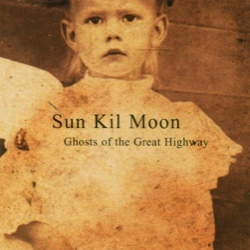 22. Sun Kil Moon – Ghosts Of The Great Highway (2003)
22. Sun Kil Moon – Ghosts Of The Great Highway (2003)
After six ethereal Red House Painters albums, three solo sets, an AC/DC cover collection, and an acting role as Stillwater’s bassist in Cameron Crowe’s Almost Famous Mark Kozelek arrived at Ghosts Of The Great Highway, the surreal metal-meets-Americana bow of his project Sun Kil Moon. No one probes the recesses of memory, of lost time and lost relationships, better than Mark Kozelek. He’s Marcel Proust with a guitar. Those memories and relationships form the warp and woof of his worldview, and the tapestry he weaves is stunning in its longing and beauty. Musically, Kozelek alternates between gentle acoustic picker and Neil Young Godfather of Grunge mode, unleashing winding electric solos. But the longing, the yearning, is a constant, and it is a palpable reminder of why he is one of the most distinctive and worthwhile artists of the 21st century. —Tom Lanham & Andy Whitman
 21. Damien Rice – O (2003)
21. Damien Rice – O (2003)
O is a stunning document of fragile eloquence that glides seamlessly from hushed ruminations to cinematic balladry. Artistic without being pretentious, Rice’s craft is anchored in melody and articulate arrangements, yet tests the listener’s honesty with dramatic turns that distinguish the record from other mostly acoustic fare, all without abandoning its cerebral core. His voice yearns with brittle emotion on “Amie,” wavers with restraint on “Cold Water” and “Cannonball,” and soars with theatrics on “Cheers, Darlin” and “Eskimo,” the epic closer that saunters from coffeehouse to opera house with moody bravado reminiscent of a toned-down Rufus Wainwright. Lyrics soaked in such heart-on-sleeve honesty have the tendency to come off too contrived, but Rice’s delivery is pure and sincere. And though songs like “I Remember” weren’t written as duets, the spirited accompaniment of Lisa Hannigan makes it hard to imagine them otherwise. The character and chemistry she brings to nearly every selection—siren-like harmonies here, co-lead vocals there—elevate Rice’s passionate prose to a lovers’ waltz. —Jay Moye
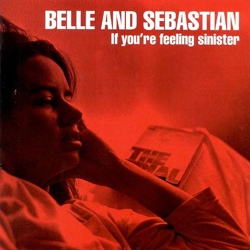 20. Belle & Sebastian – If You’re Feeling Sinister (1996)
20. Belle & Sebastian – If You’re Feeling Sinister (1996)
After a limited-run debut and a handful of singles, Belle & Sebastian emerged as a fully-formed artistic entity with 1996’s If You’re Feeling Sinister. Between Stuart Murdoch’s literary story-songs and the band’s sedate and ornate folk-rock instrumentation, Sinister‘s appeal quickly expanded past twee indie-pop kids and ensnared anybody interested in mature, intelligently crafted pop. Sinister is still the high water mark for what’s been a brilliant career stretching into the 21st century. —Garrett Martin
 19. Over the Rhine – Ohio (2004)
19. Over the Rhine – Ohio (2004)
In the liner notes accompanying Over the Rhine’s gloriously self-indulgent double-disc, Ohio, co-founder Linford Detweiler, writes, “We grew up in small coal mining towns in the Ohio Valley, listening to music that could have only been unearthed in America.” The songs here feel gritty and real, unpolished and perfect. Just like people. All the artifice (both musical and emotional) has been carefully dismantled, traditional instruments—upright piano, pedal steel, acoustic guitars—have been dusted off, arrangements have been simplified, windows into souls have been propped open a bit wider. In stark contrast, Karin Bergquist’s voice never felt as undressed and painfully honest as it does in these songs, as if she’s opened her gut and tugged the melodies out. This process is partly masochistic, partly exhibitionist, entirely self-consuming, but such is true art. Ohio, is more than simply a dense, rich, vulnerable collection of songs; it’s a dirt-road companion on that difficult journey inward, upward, homeward. —Jason Killingsworth
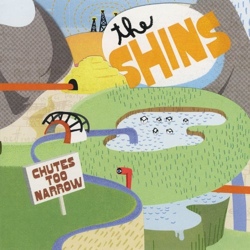 18. The Shins – Chutes Too Narrow (2003)
18. The Shins – Chutes Too Narrow (2003)
A long time ago, the notion of this band changing your life was less the stuff of cringe-inducing Zach Braff screenplays and more plain truth. Today the idea seems just as unlikely as meeting your soulmate in a psychiatrist’s waiting room, but by some odd musical alchemy, all of Chutes Too Narrow’s unassuming parts—those tweaky guitars, bedroom symphonics and James Mercer’s wobbly self-harmonizing—gelled into the kind of album that demands to be proliferated by forcing headphones upon friends (and, yes, quirky potential lovers). —Rachael Maddux
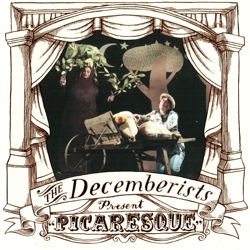 17. The Decemberists – Picaresque (2005)
17. The Decemberists – Picaresque (2005)
On Picaresque, Colin Meloy zeroes in on characters—usually those struggling in the throes of concealed, unrequited or otherwise ill-fated love—before shifting his focus to setting. “The Infanta,” all galloping guitars and pounding drums, contrasts the ornate coronation of a Portuguese princess with the placid simplicity of her dreams. The quiet lament “Eli, the Barrow Boy” relates the tale of a heartbroken ghost—Sisyphus in corduroy pushing his barrow in eternal penance. Meloy even ventures into an American present as outlandish as his imagined past. “The Sporting Life”—which interleaves a swinging, jaunty beat with swelling organ flourishes—relates the humiliation of an injured soccer player who fails to fulfill his father’s athletic aspirations. The shimmering, upbeat stomp of “Sixteen Military Wives” conflates the American invasion of Iraq with the Academy Awards ceremony. —Brian Howe
 16. Beck – Sea Change (2002)
16. Beck – Sea Change (2002)
For a man so used to wearing musical masks, Beck lais himself bare on Sea Change. It’s the most aching, honest album he’s ever made, a musical breakup memoir on par with Blood on the Tracks or Shoot Out the Lights. To say his heart is on his sleeve here doesn’t capture the emotional nakedness; his heart is speared on a record spindle, and he lets us listen. And why wouldn’t we? With a full stock of golden melodies, crafty string arrangements, and career-best vocal performances, Beck is maybe the best American songwriter of his generation. —Steve LaBate
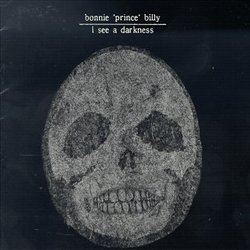 15. Bonnie “Prince” Billy – I See a Darkness (1999)
15. Bonnie “Prince” Billy – I See a Darkness (1999)
If Johnny Cash covered one of your songs on his final albums, it automatically meant it embodied some sort of country spirit however musically disguised. Cash, of course, interpreted the title track from this 1999 record the following year on American III: Solitary Man. I See a Darkness is dark, yes. It is gothic without being goth. Yet, its confessional cries and distant, discordant layering (especially on tracks like “Nomadic Revery (All Around)”) are also subversive in a way that honors the subgenre. —Hilary Saunders
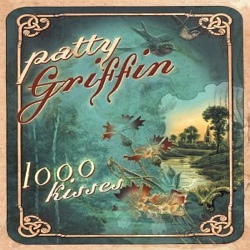 14. Patty Griffin – 1000 Kisses (2002)
14. Patty Griffin – 1000 Kisses (2002)
After showing promise on her sparse mid-’90s debut, Living With Ghosts, and then delving into more rocking territory with Flaming Red and then-unreleased Silver Bell, singer/songwriter Patty Griffin pared back, recording most of 1000 Kisses live in the studio and delivering what remains the album of her career. Her voice flat out slays, its beauty and power on display whether she’s performing her own compositions or interpreting others’. And the songs display a mastery that places her alongside Dylan, Cohen, et al. Griffin mines the mundane and finds the rich meaning in its details. On “Making Pies,” when she sings, “Did I show you this picture of my nephew / Taken at his big birthday surprise?”—she transforms clunky conversation into poetry. —Tim Regan-Porter
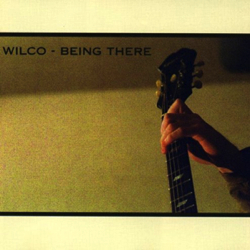 13. Wilco – Being There (1996)
13. Wilco – Being There (1996)
After Uncle Tupelo’s split in 1994, fans turned their attention to Jay Farrar and Jeff Tweedy’s new groups. And after the success of Son Volt’s debut Trace the following year (along with the lukewarm critical response to Wilco’s AM), it seemed like Farrar had emerged from the break-up the clear victor to those keeping score at home. Enter Being There. Wilco’s 1996 double-LP was everything a sophomore effort should be; it saw the band experimenting beyond their alt-country roots with stellar tracks like “Misunderstood” and “Hotel Arizona” while simultaneously staying true to their aesthetic. In short, it was the beginning of the Wilco we know and love today. —Bonnie Stiernberg
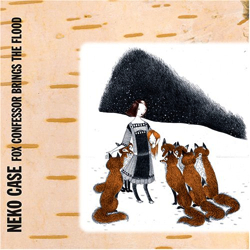 12. Neko Case – Fox Confessor Brings the Flood (2006)
12. Neko Case – Fox Confessor Brings the Flood (2006)
The guest list for Neko Case’s fourth proper studio outing is a good indication of the diversity of her output. Gracing this project are locals Howe Gelb, and Calexico, plus out-of-towners Kelly Hogan, Dexter Romweber and Garth Hudson, to name a few. Case, of course, still approximates a Northwestern Patsy Cline with a graduate degree, and while the stories she tells are mournful, her delivery remains buoyant. If an old spiritual (“John Saw That Number”) doesn’t reveal her hand, you couldn’t be blamed for thinking Case was working to establish a new kind of magical-realist gospel, or Optimism Gothic. She delivers a country-noir set that draws on mythic folk archetypes, providing strange details and raising intriguing questions with each listen. —William Bowers
 11. Josh Ritter – The Animal Years (2006)
11. Josh Ritter – The Animal Years (2006)
After the latter third of the 20th century became littered with “new Dylans,” it became obvious that no one could ever fill that role. So when Josh Ritter made his first few strummy, literate records, there were few lofty expectations to keep him from developing his talent and fanbase. After three promising albums, the masterpiece arrived. Recorded with producer Brian Deck, who stretched Ritter’s rootsy folk in more ambitious directions, The Animal Years is bookended by a pair of epic ballads—“Girl in the War” and “Thin Blue Flame”—which helped secure his place at the table of great songwriters without ever having to live in anybody’s shadow. —Josh Jackson
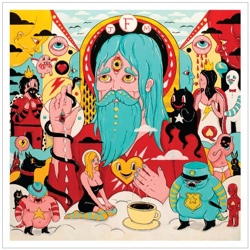 10. Father John Misty – Fear Fun (2012)
10. Father John Misty – Fear Fun (2012)
Josh Tillman’s first album under the moniker Father John Misty often recalls his old band, Fleet Foxes. But it also recalls John Denver, Neil Young and, at times, The Band. It’s also the best realization of that old, forgotten genre descriptor “freak folk”—something a little stranger and more imaginative than his old group, but with the same big-sky atmospherics. Leaving his given name and self-serious songwriting behind freed Tillman to embrace his acerbic wit, and a relocation to Hollywood freed him to embrace a little more theatricality. The result is a collection of a dozen clever, gripping songs that haven’t gotten old after countless listens. —Josh Jackson
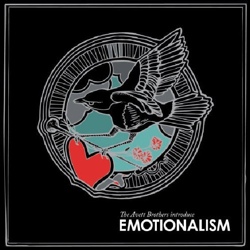 9. The Avett Brothers – Emotionalism (2007)
9. The Avett Brothers – Emotionalism (2007)
Much as The Band’s earnest roots rock helped topple nonsensical hippie credos like “Don’t trust anyone over 30,” The Avett Brothers did their best to combat modern-day hipster detachment and pseudo-coolness with Emotionalism’s simple, poetic story-songs and bittersweet, introspective laments. The album—down to the title itself—is a celebration of unselfconscious passion. It’s also a huge step forward musically: The relative sonic polish works magically in contrast to the Avetts’ jagged edge; they go beyond their core of acoustic guitar, banjo and upright bass (a change foreshadowed by Four Thieves Gone’s “Colorshow”), adding piano, B3, drums, electric guitar and mandolin. The vocals feel more carefully arranged, relying less on energetic screams and shouts and giving the melodies room to breathe; and the influences peeking through are more varied than ever, the music sporadically reminiscent of everything from Help!-era Beatles to Chopin nocturnes. —Steve LaBate
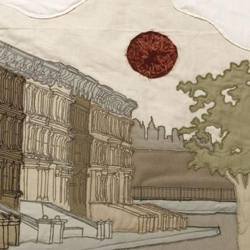 8. Bright Eyes – I’m Wide Awake, It’s Morning (2005)
8. Bright Eyes – I’m Wide Awake, It’s Morning (2005)
With Wide Awake, the one-time prince of emo finally grew up, and—as much as any one artist could during a decade of such cultural fragmentation—became the inadvertent spokesman for his aimless generation. The poetry of Conor Oberst’s lyrics captured the hearts of fellow twentysomethings with their urgent, exhausted, lovesick and thought-lost wonder. It felt like he was collectively singing our own minds—asking the big questions, confronting a culture of fear, searching for new beginnings, wrestling with God and truth and innocence lost. —Steve LaBate
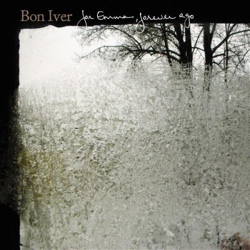 7. Bon Iver – For Emma, Forever Ago (2008)
7. Bon Iver – For Emma, Forever Ago (2008)
Not since a creek drank a cradle in 2002 had anyone so quietly overtaken the indie-music community as Justin Vernon did in 2008 with Bon Iver’s For Emma, Forever Ago. This lonesome post-break-up album is drenched in the kind of melancholy that feels a lot like joy, and sounds just as vivd. Rather than wallowing in loss, Vernon’s otherworldly falsetto and warm acoustic guitar provide a hopeful contrast to lyrics like “Saw death on a sunny snow.” It was less like the end of a relationship and more like the promise of a new beginning.—Josh Jackson
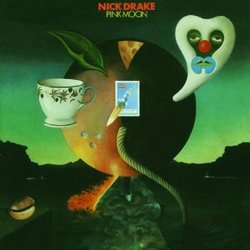 6. Nick Drake, Pink Moon (1972)
6. Nick Drake, Pink Moon (1972)
Few albums from the 1970s have aged as well as Nick Drake’s final album from 1972, recorded in a pair of post-midnight sessions with just Drake and producer John Wood. The simplicity of acoustic guitar, subtle piano and whispered vocals could have been recorded four decades later—and indeed many more copies of Drake’s albums have sold since his death in 1974. And, of course, the heartbreak of which he sings will never become irrelevant. Beauty and melancholy have seldom meshed so completely as on songs that tackle longing, despair and the slimmest rays of hope.—Josh Jackson
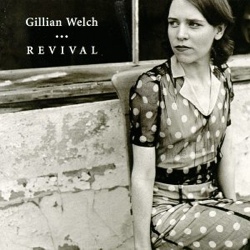 5. Gillian Welch – Revival (1996)
5. Gillian Welch – Revival (1996)
Gillian Welch and her musical partner David Rawlings hail from Los Angeles and Rhode Island, respectively, but they arrived on the indie folk scene in 1996 as if they’d just melted out of Depression-era Appalachian Mountain ice. The tales of moonshiners and brothel girls matched the old-timey twang of Welch, and didn’t seem forced in the least. It’s no surprise that a debut like Revival marked the beginning of a spectacular career. —Josh Jackson
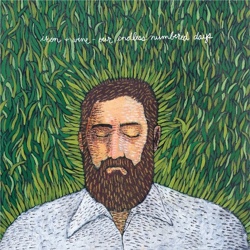 4. Iron & Wine – Our Endless Numbered Days (2004)
4. Iron & Wine – Our Endless Numbered Days (2004)
It’s rare that a debut album rolls around as lovely and original as Iron & Wine’s The Creek That Drank The Cradle, but for his sophomore effort, Sam Beam managed to improve upon the basement-tapes sound of his new Americana without sacrificing its intimacy. He enlisted producer Brian Deck (Modest Mouse) to give musical depth to match the haunting lyrics of songs like “Sodom, South Georgia,” “Cinder and Smoke” and “Naked as We Came.” —Josh Jackson
 3. Elliott Smith – Either/Or (1997)
3. Elliott Smith – Either/Or (1997)
Smith’s music consisted of wispy, weary vocals alongside a solitary acoustic guitar, an all-too-apt representation of his desolate and twisted emotional states. Although he had a fragile opinion of himself, one listen to Either/Or reveals him to be an exceptional talent. Even as Smith was buckling under the weight of depression and addiction, the album expanded his sound, intertwining his acoustic foundations with electric guitars, bass, keyboards and drums—all played by Smith. Three songs were included in the soundtrack for the Oscar-winning Good Will Hunting. —Nathan Spicer
 2. Neutral Milk Hotel – In the Aeroplane Over the Sea (1998)
2. Neutral Milk Hotel – In the Aeroplane Over the Sea (1998)
Neutral Milk Hotel made a timeless record by taking a snapshot of a reality that never existed. Lyrically, Jeff Mangum imagines ghosts and circus freaks and Jesus Christ dancing around burning Nazi propaganda, and the damaged sonic treatment furthers the vision; those horns on “Holland, 1945” sound like an imaginary Dr. Seuss-drawn instrument realized. But the most mythical character to develop from In The Aeroplane Over the Sea was Mangum himself, who avoided the limelight for a half decade following the album’s release. When “King Of Carrot Flowers Parts 2 and 3” erupts from an acid-fueled Sunday morning revival into an otherworldly fuzz-punk song, who isn’t ready to strap on the Nike Windrunners and follow Jeff Mangum to the gates of Heaven? —Ryan Wasoba
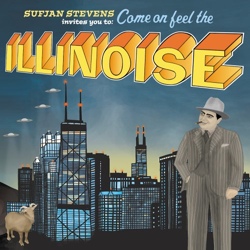 1. Sufjan Stevens – Illinois (2005)
1. Sufjan Stevens – Illinois (2005)
In 2005, when Sufjan Stevens released Illinois, the second album in his at-least-two-state project, American pride was sagging, much as it is today. The death toll in Iraq was steadily climbing, and we still had George W. Bush in charge of it. Meanwhile, Stevens was beginning to seem brilliant enough to fulfill his ambitious 50-state plan. His music pushed boundaries between pop and classical, and the emotional weight of his lyrics grounded his feather-light voice. There was a distinct peculiarity about Illinois and Stevens himself, who gave his songs titles like “To the Workers of the Rock River Valley Region, I Have an Idea Concerning Your Predicament.” Critics embraced the mystery and declared the album a masterpiece. Stevens and his band, the Illinoisemakers, wore cheerleading costumes onstage to promote the record, and once its success took them to larger venues, Stevens switched to giant, colorful bird wings. His band was a spectacle, their performances magical. Thousands of fans gathered in theaters across the country to behold this winged creature and rally behind his songs about America’s heartland. It was a new, weird kind of patriotism. Stevens collected facts and anecdotes about the great state of Illinois, stringing them together in ambitious rhyme schemes and wrapping them in meticulous arrangements. “Decatur, or, Round of Applause for Your Stepmother” is superficially a song about a city, but beneath the textbook trivia is Stevens’ story of reconciling with his father’s wife. The gut-wrenching “Casimir Pulaski Day” is about a friend dying of bone cancer, and “The Seer’s Tower” looks at idol worship from the perspective of Chicago’s tallest building. And then there’s “John Wayne Gacy, Jr.,” the hushed, nightmare-inducing acoustic song about the rapist and serial killer who preyed on teenaged boys, stashing their bodies under the floorboards in his Chicago home. “His father was a drinker and his mother cried in bed / Folding John Wayne’s T-shirts when the swing set hit his head,” Stevens sang, referencing a true story. But the song’s conclusion is what got people talking: “And in my best behavior, I am really just like him,” Stevens half-whispered as the music quieted behind him. “Look beneath the floorboards for the secrets I have hid.” It was a startlingly confessional sentiment at the heart of the best indie-folk album of all time. —Kate Kiefer
Geen opmerkingen:
Een reactie posten